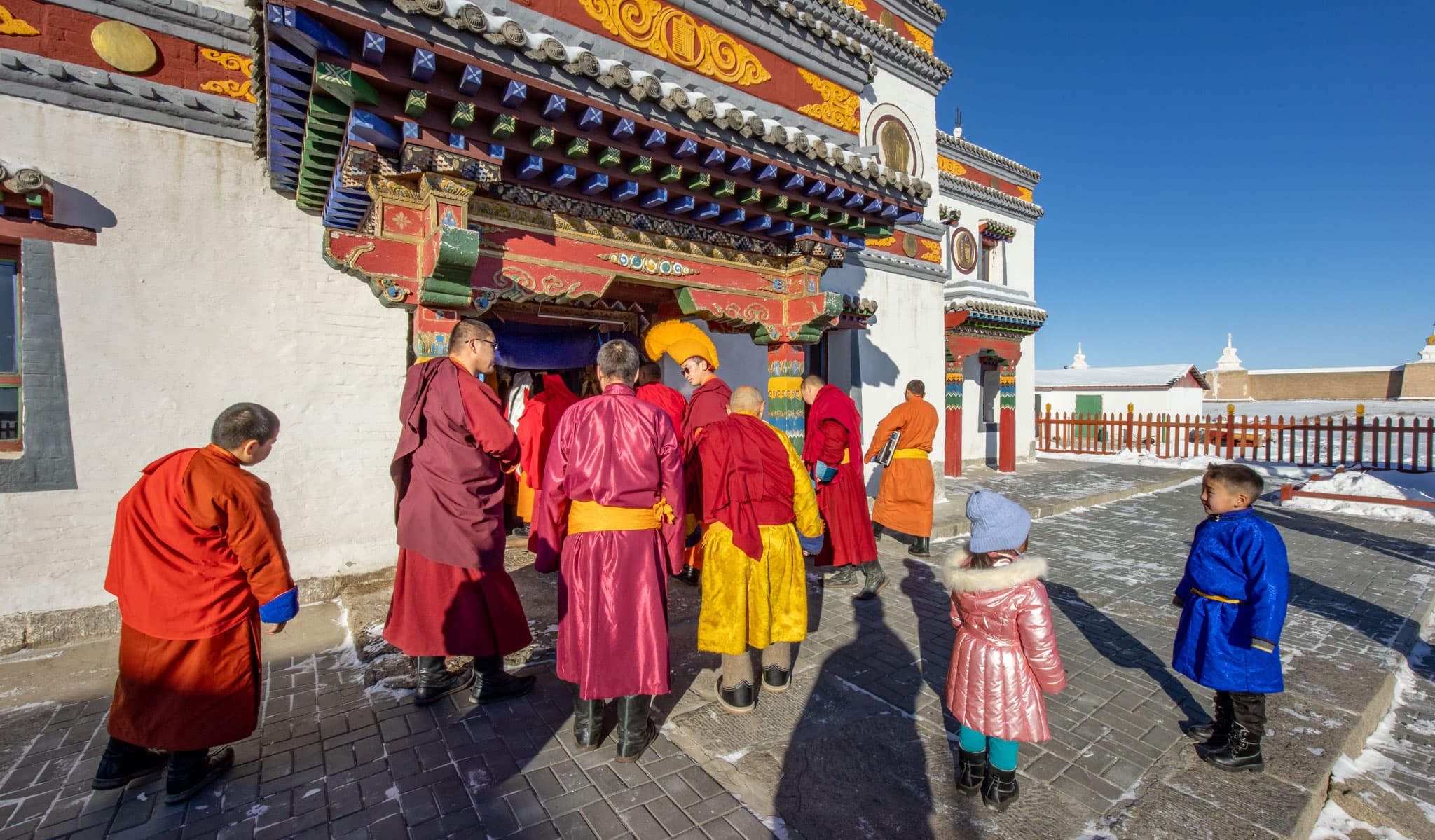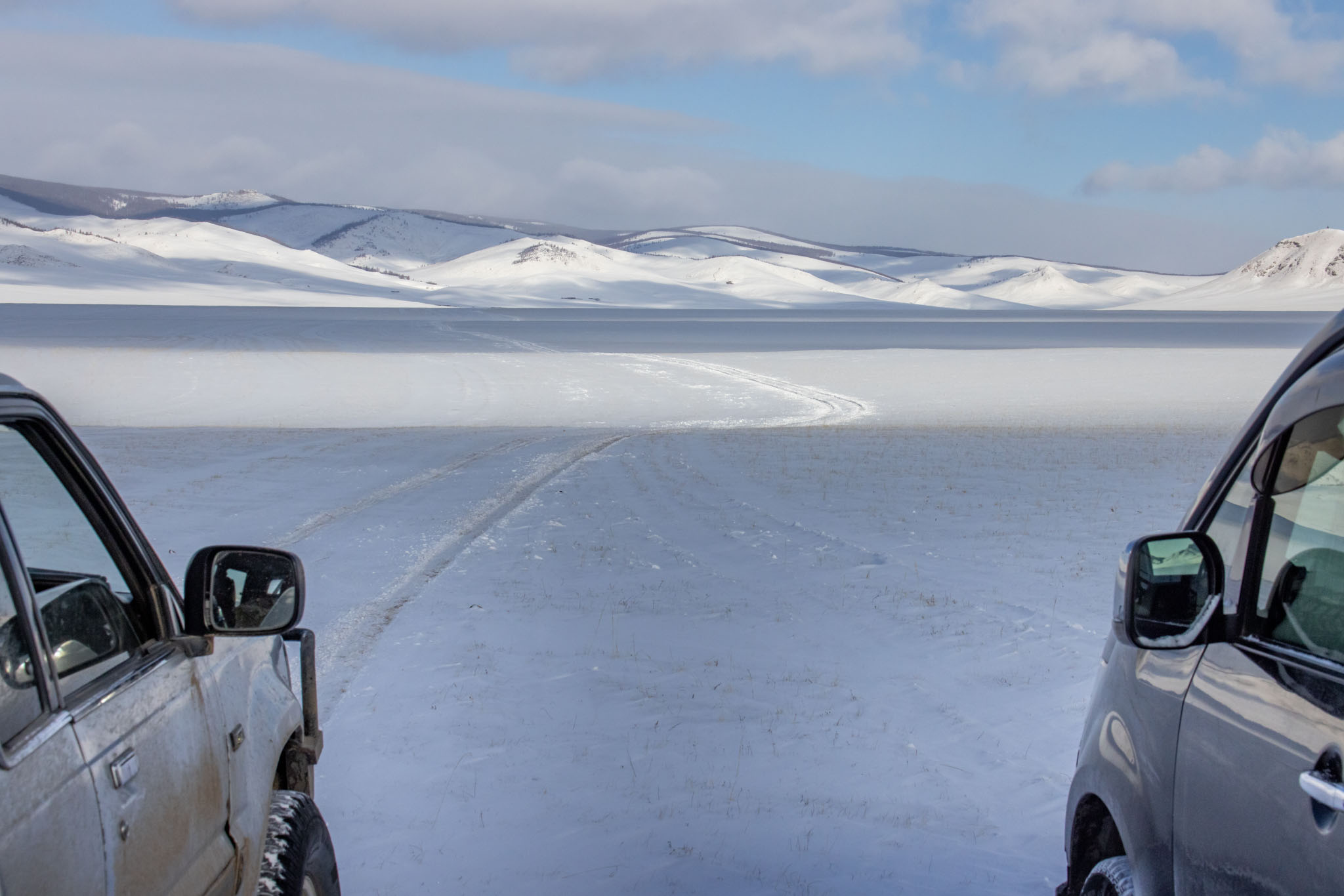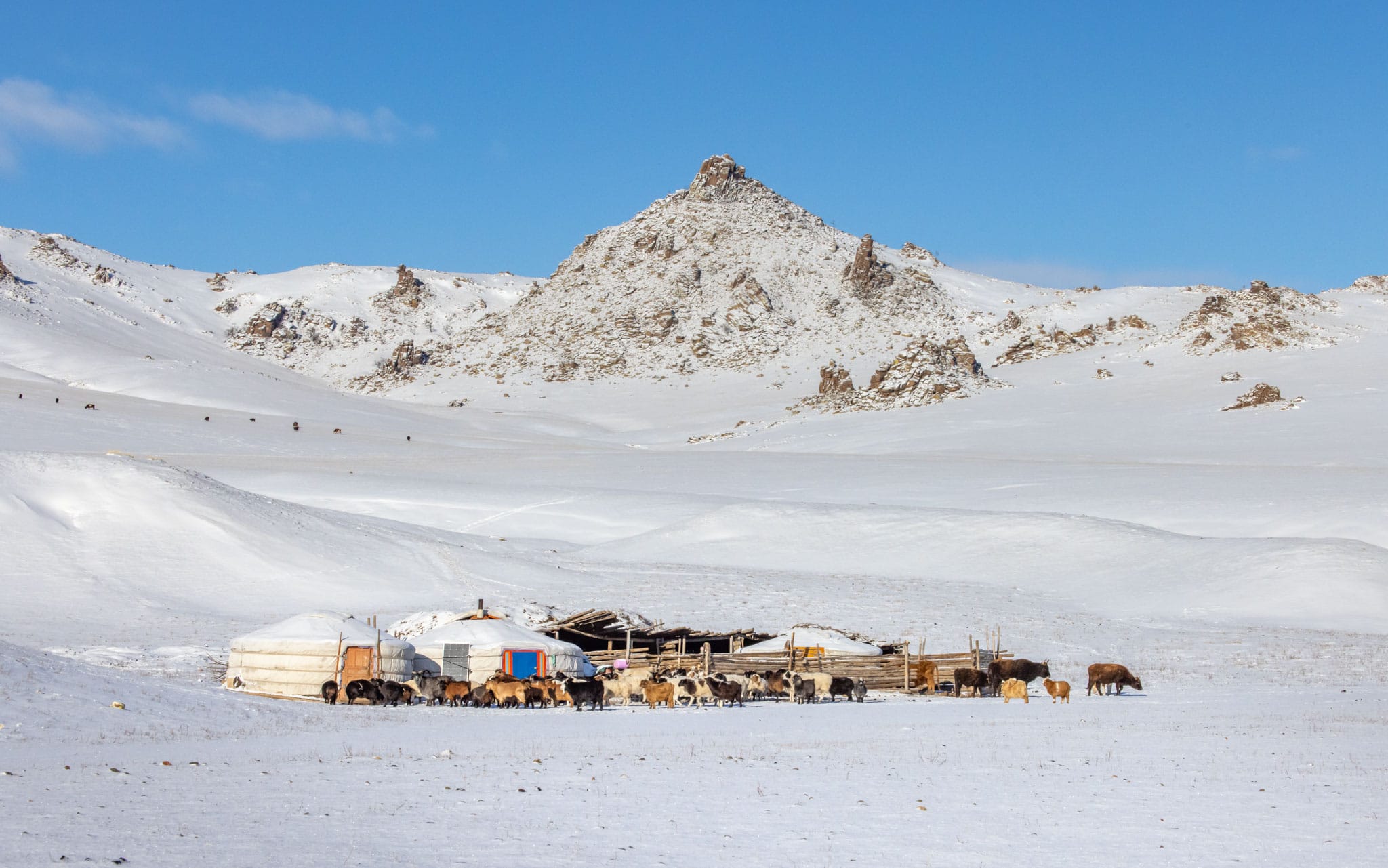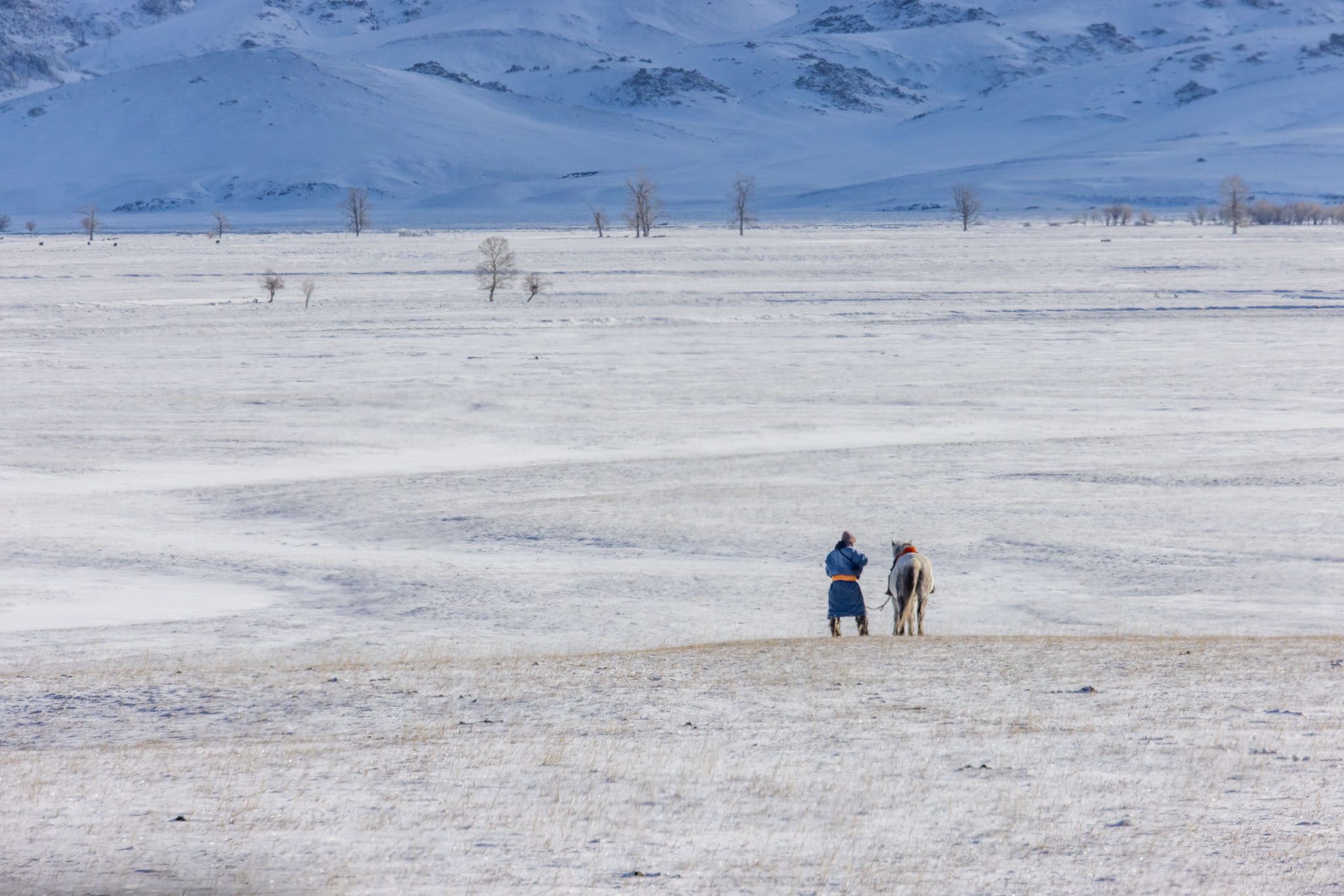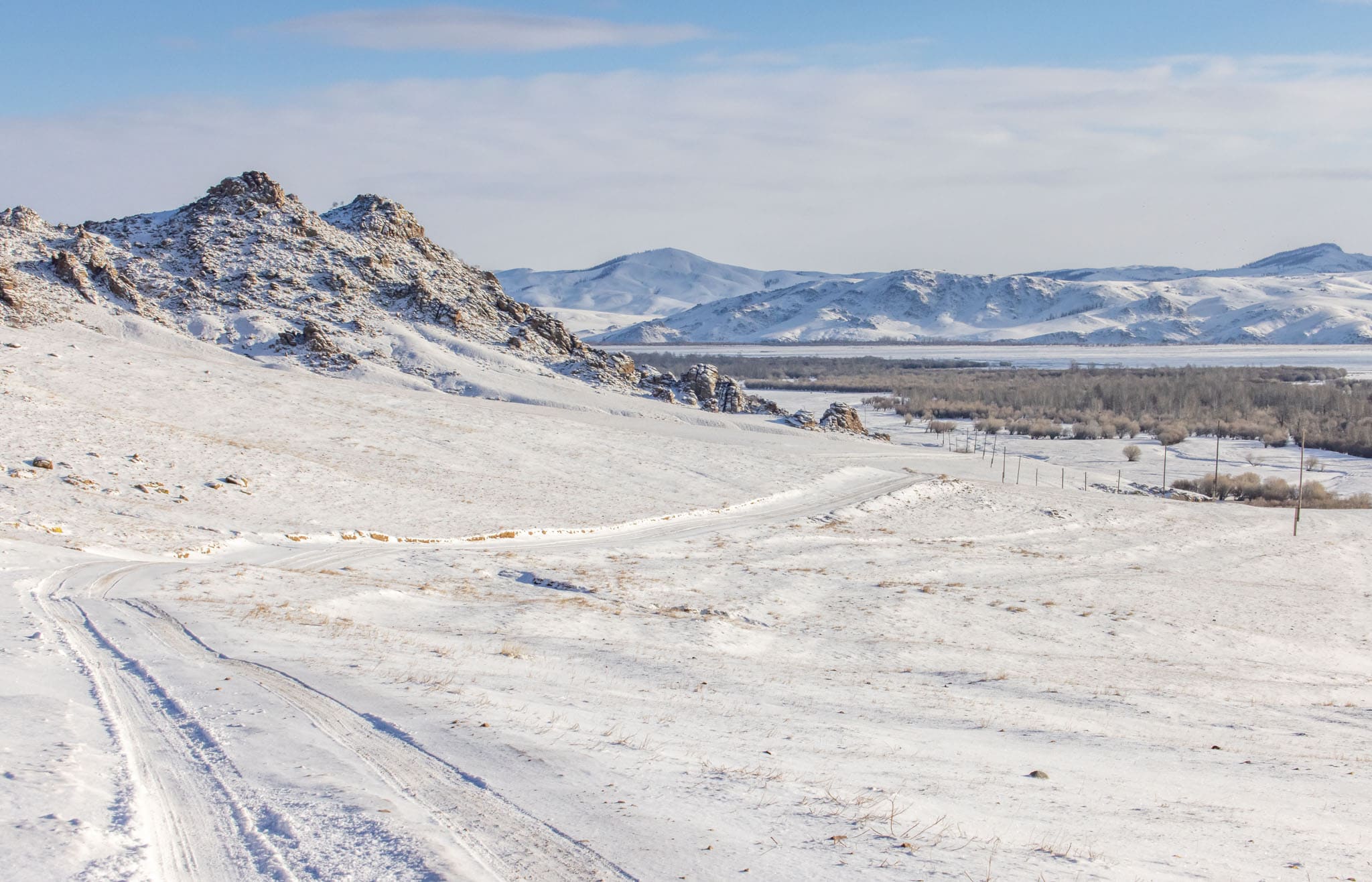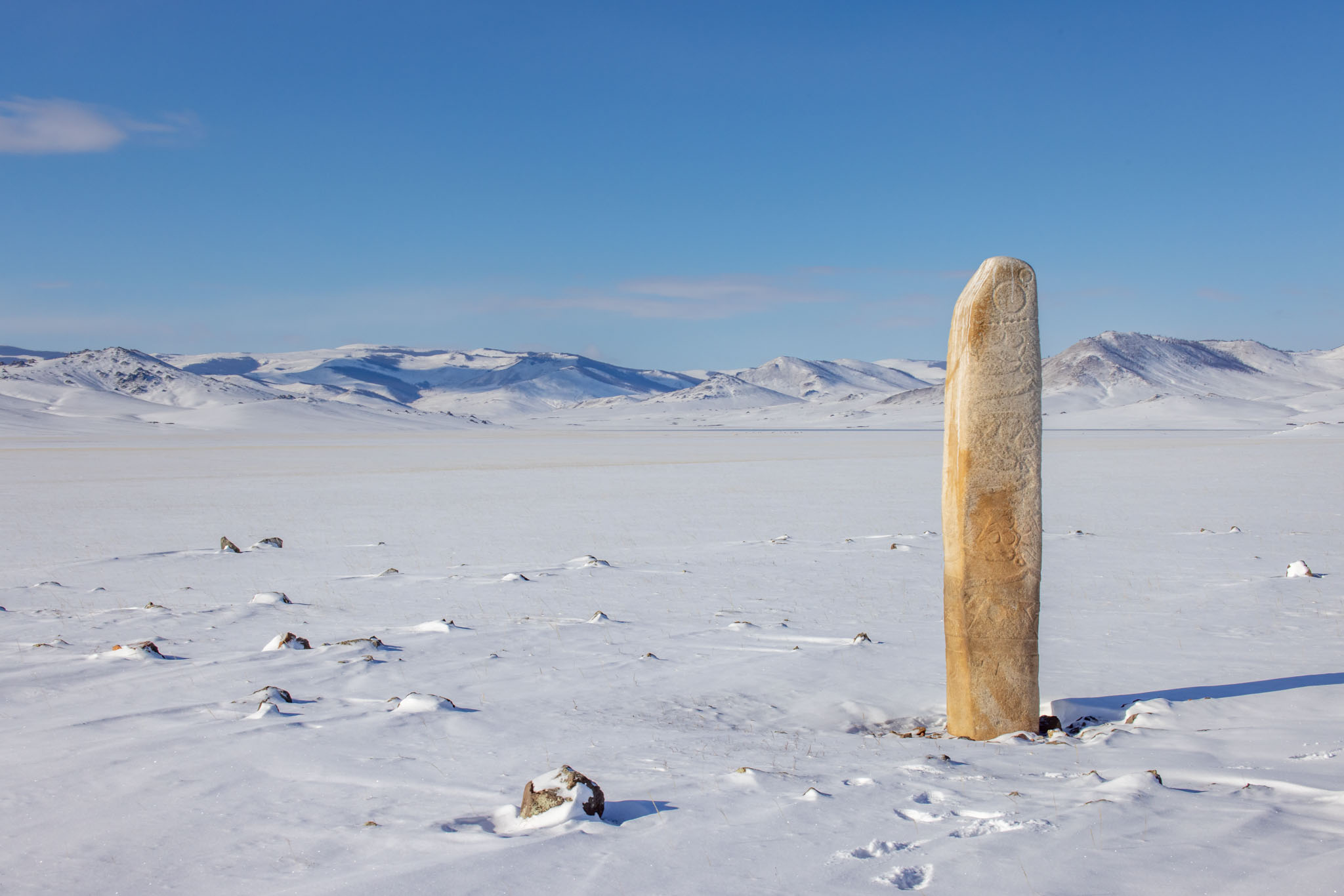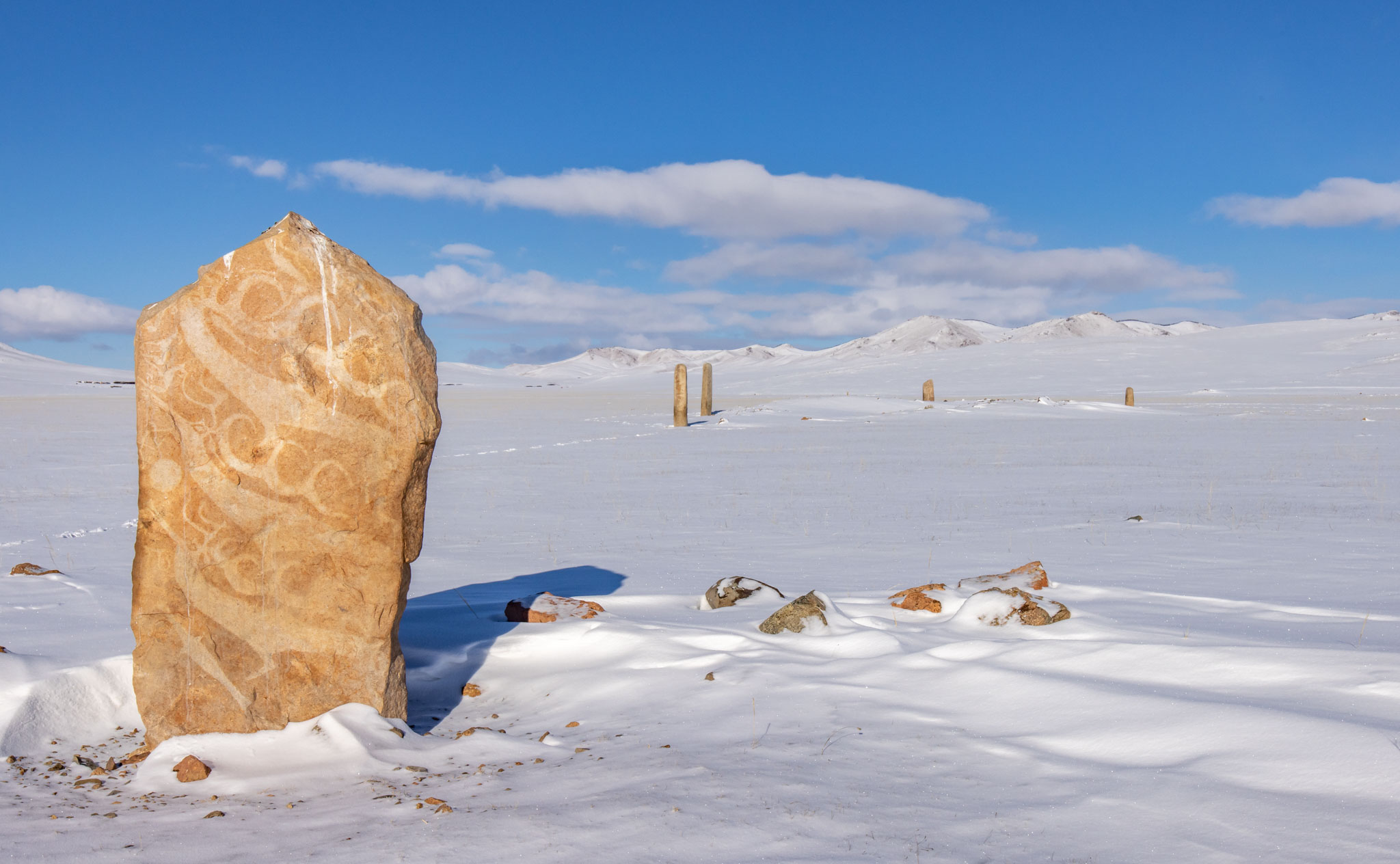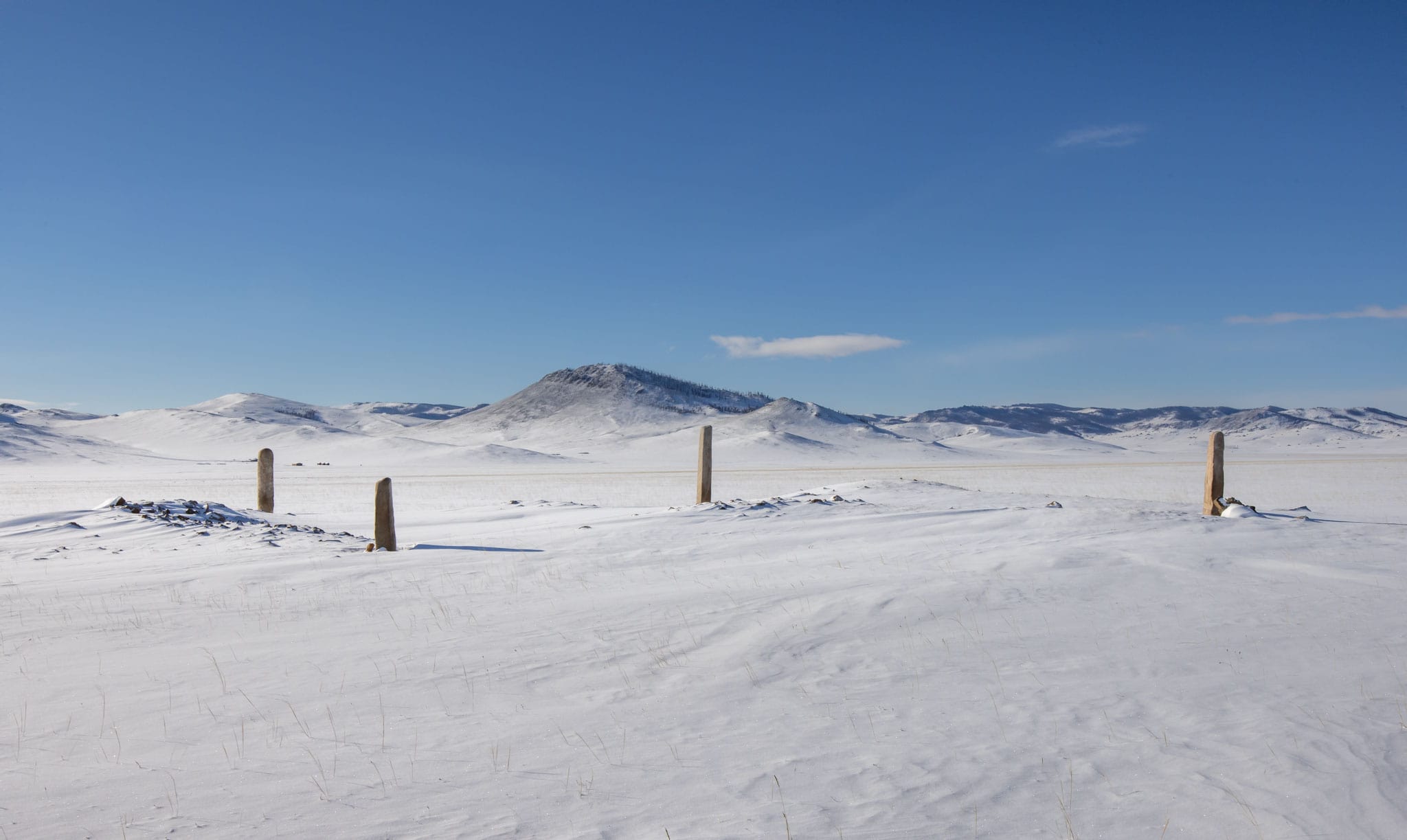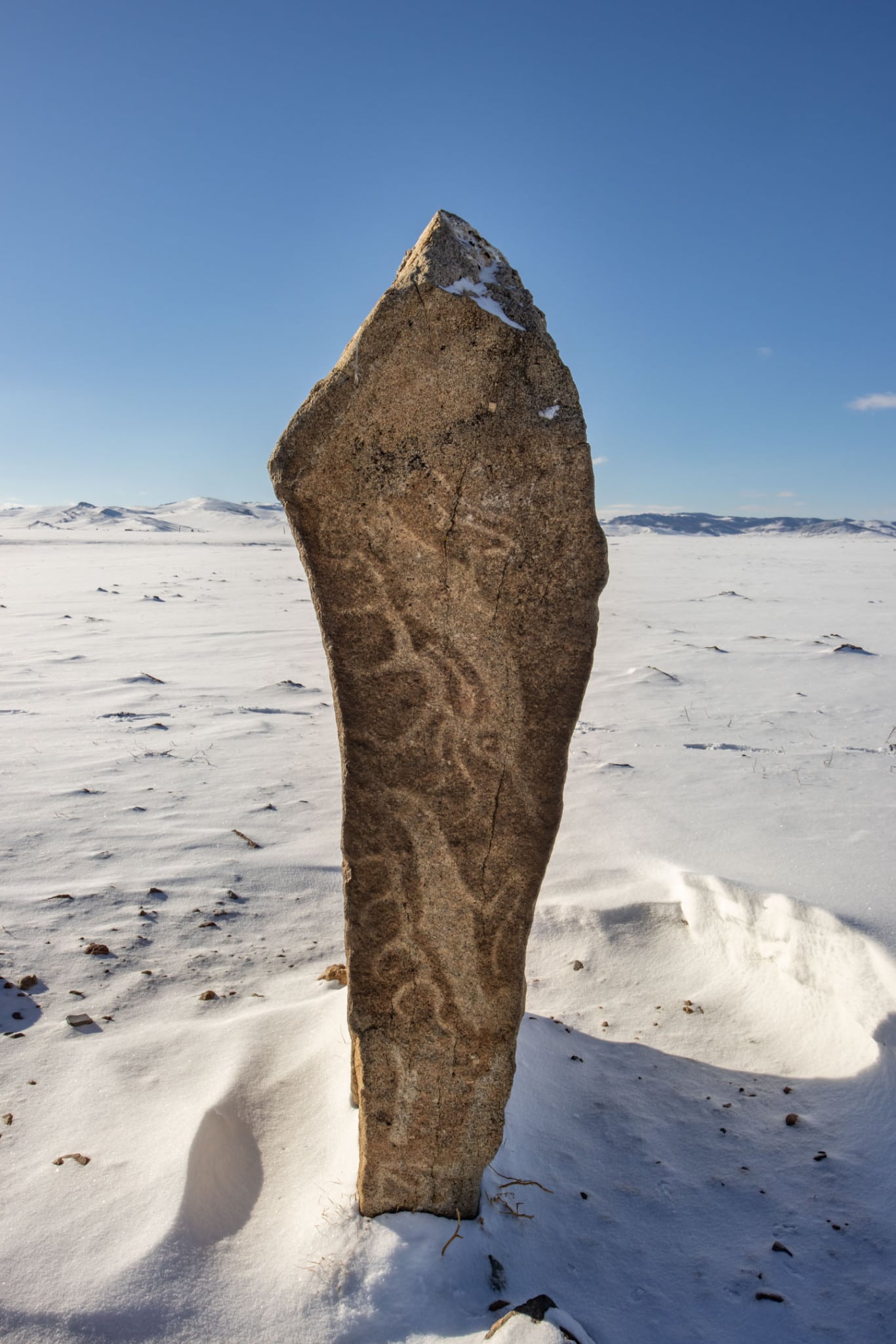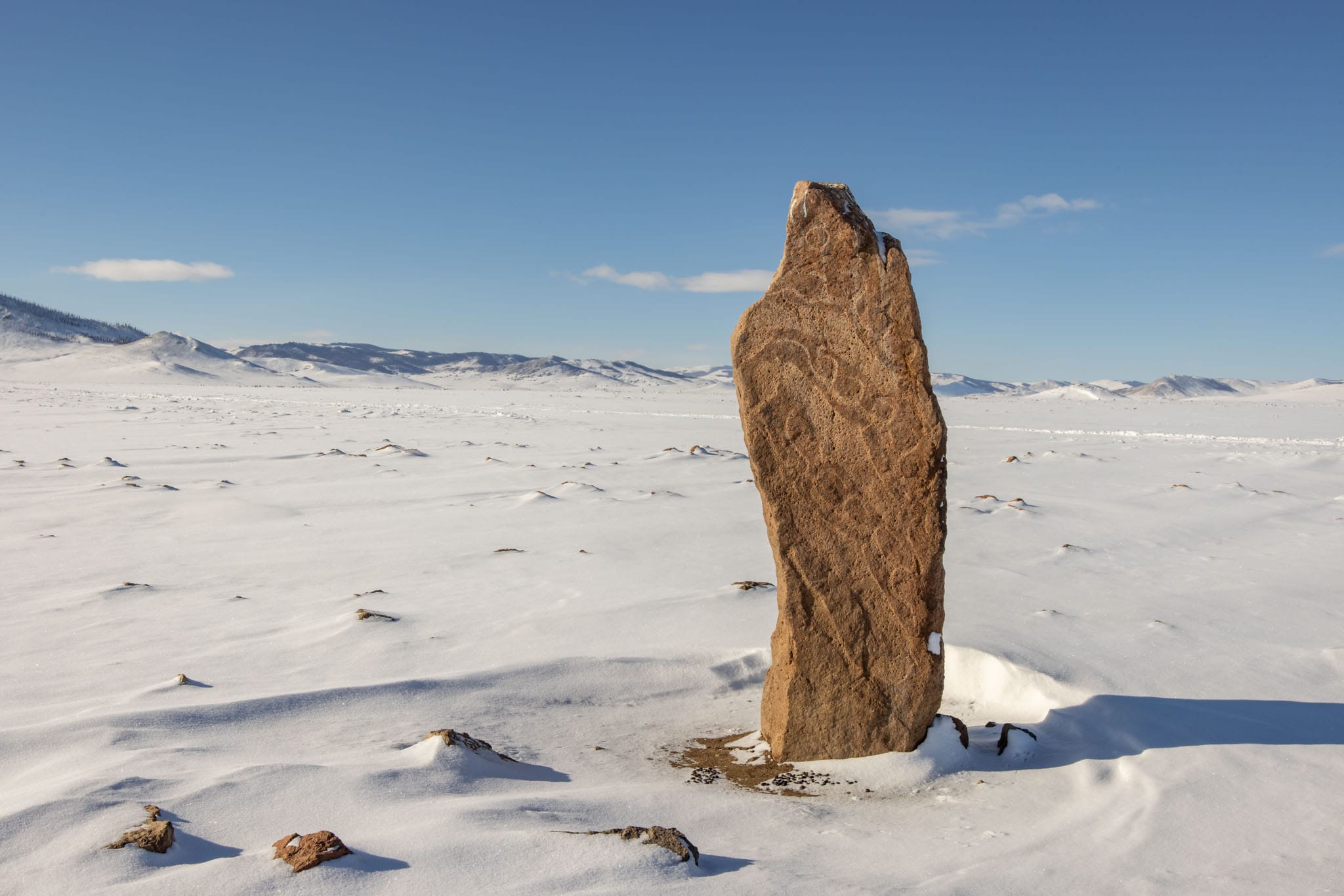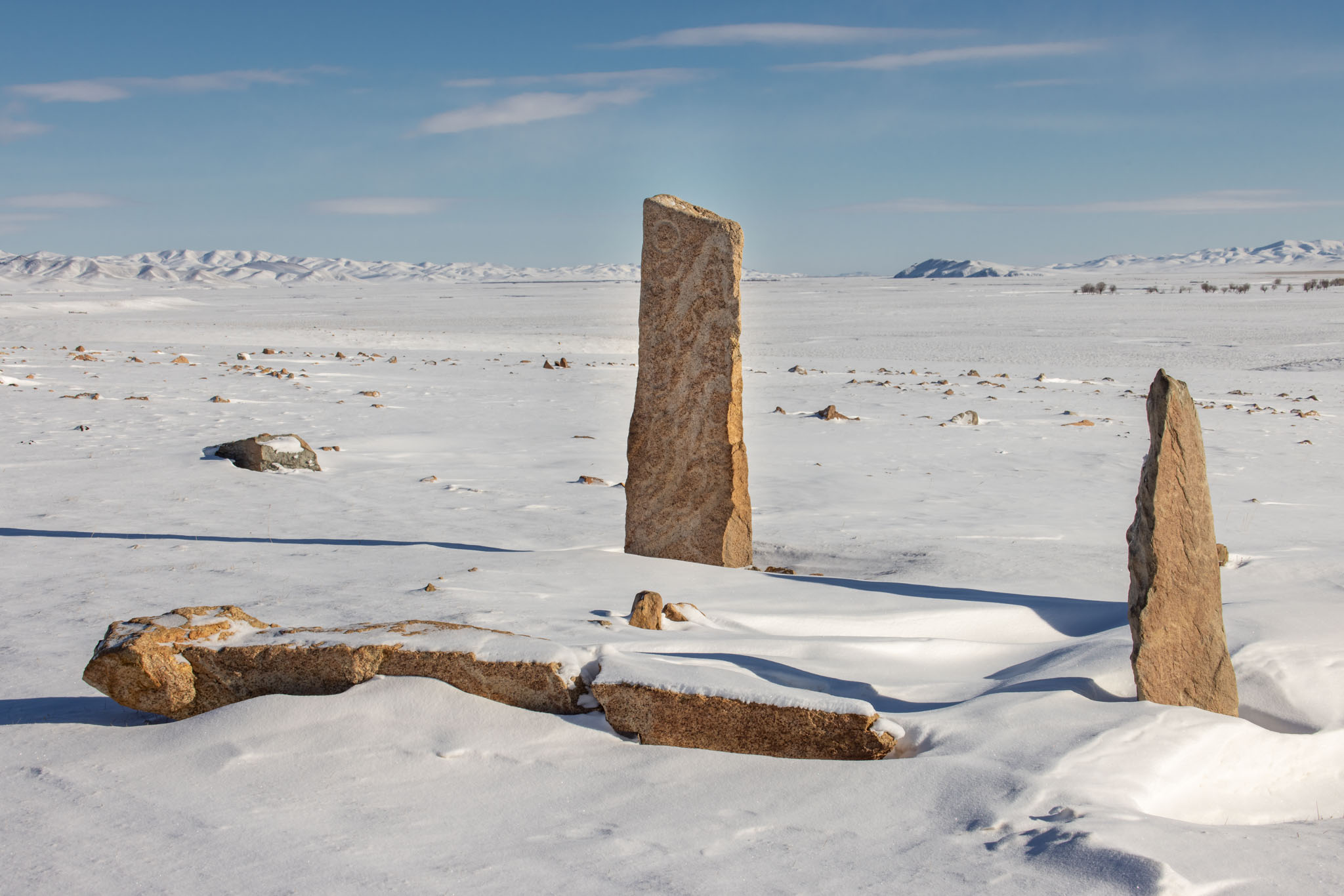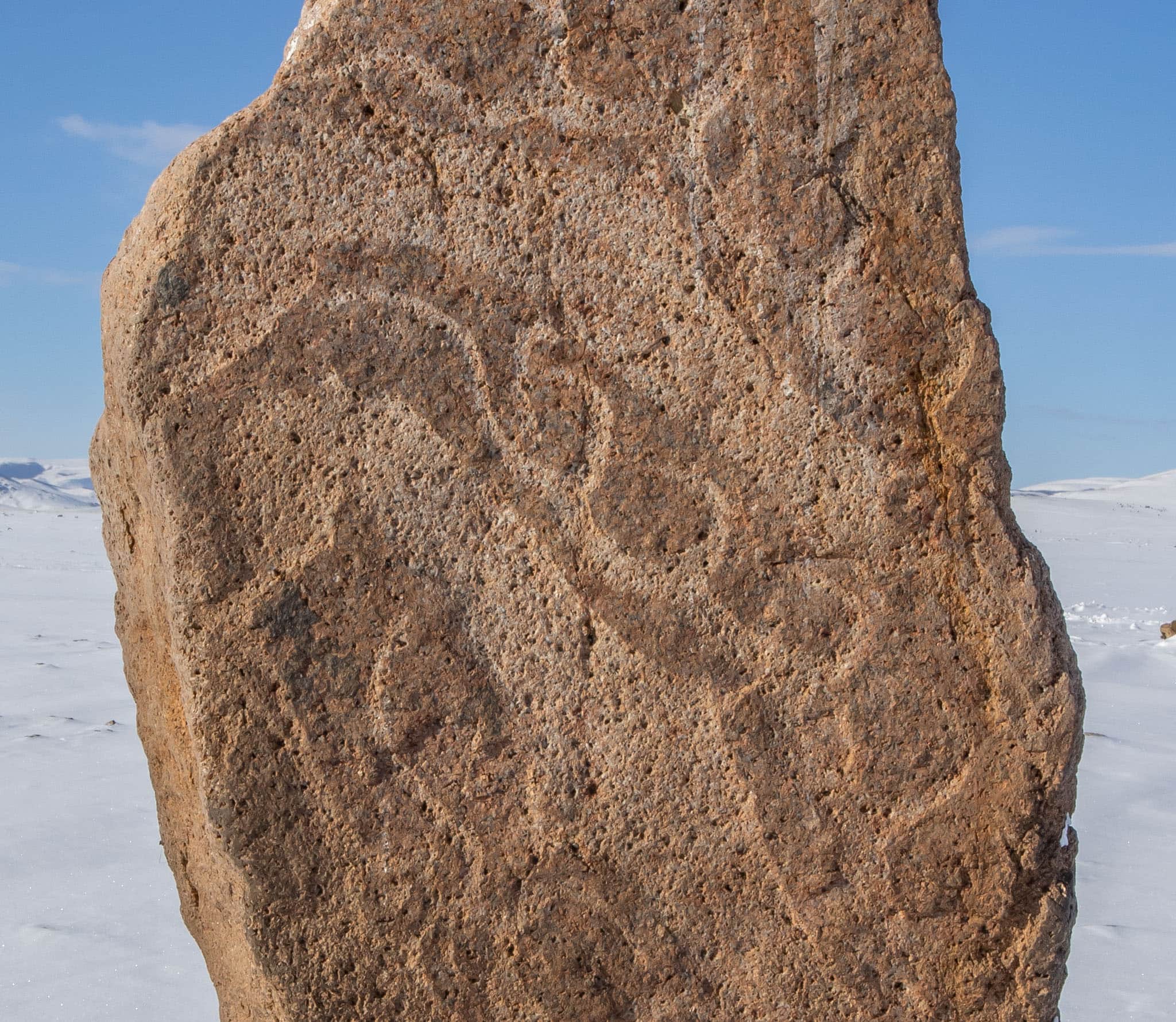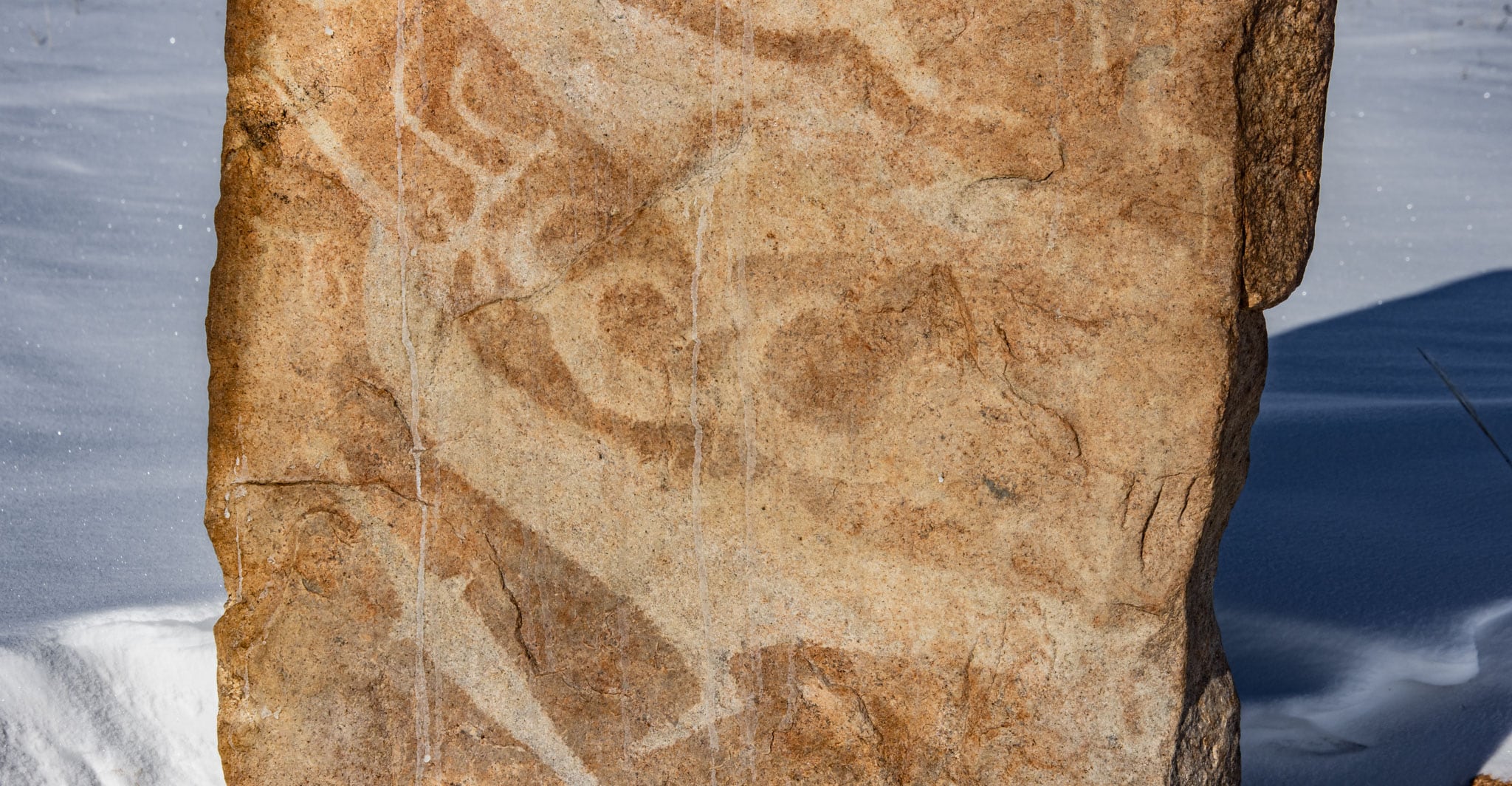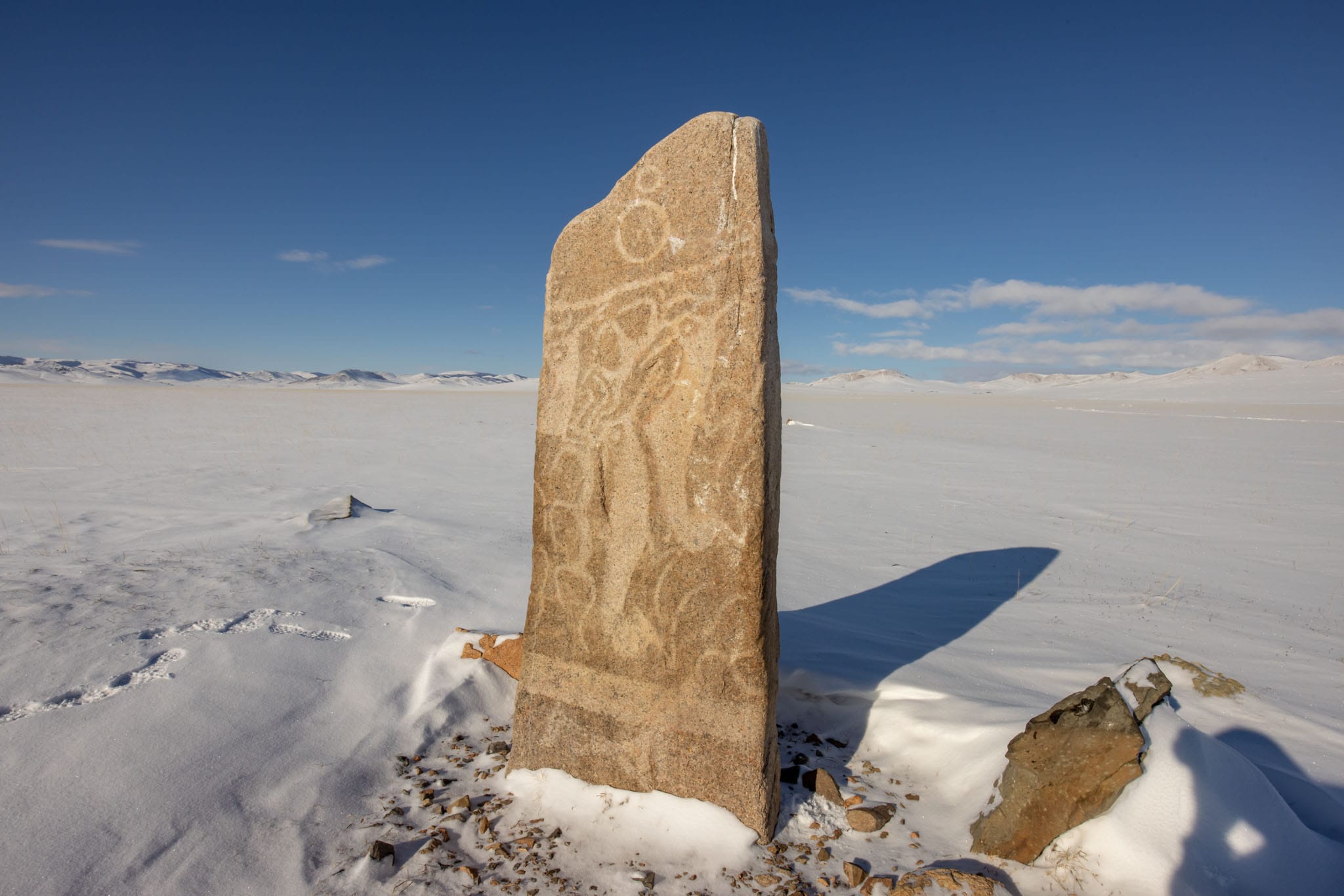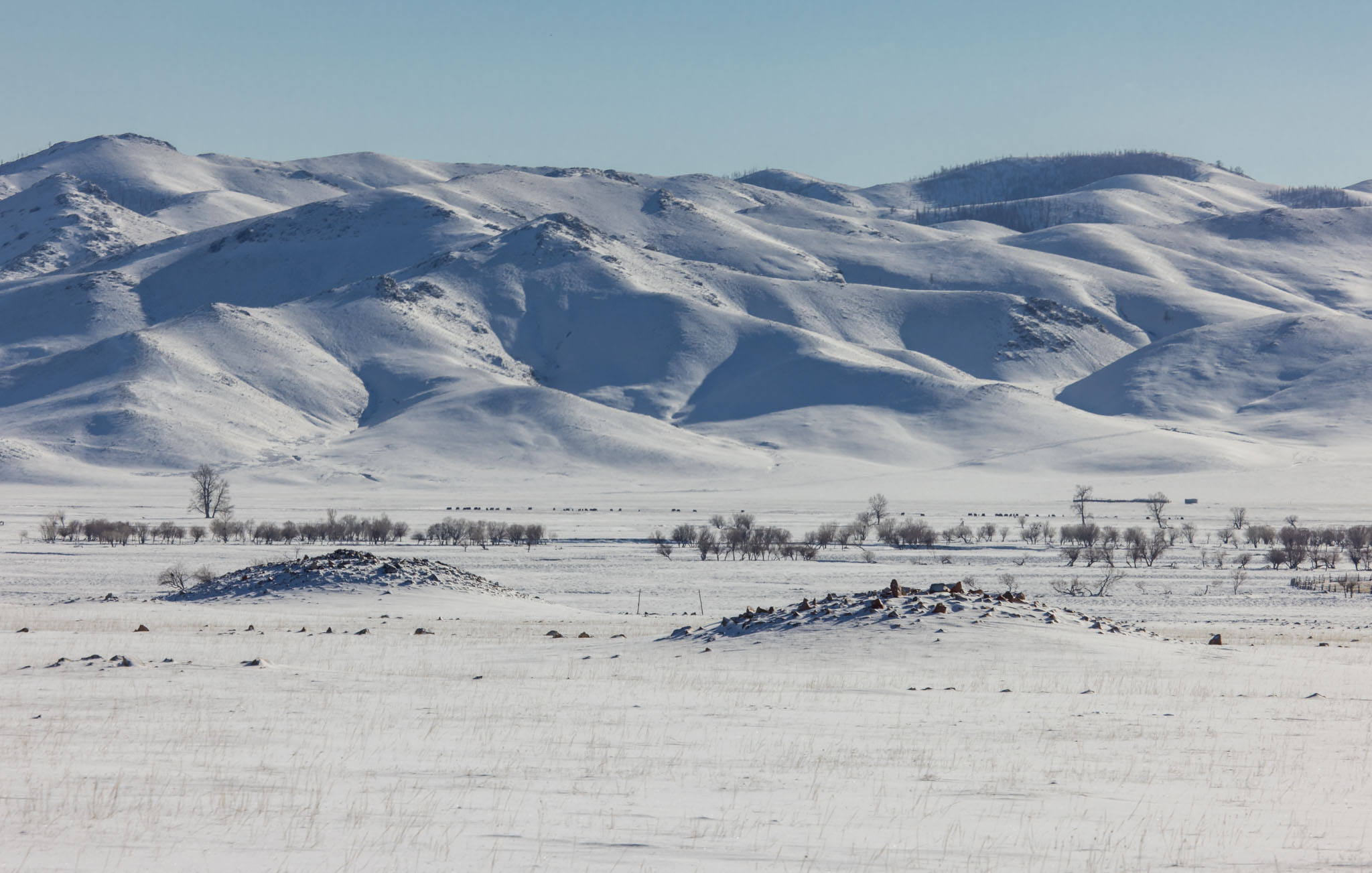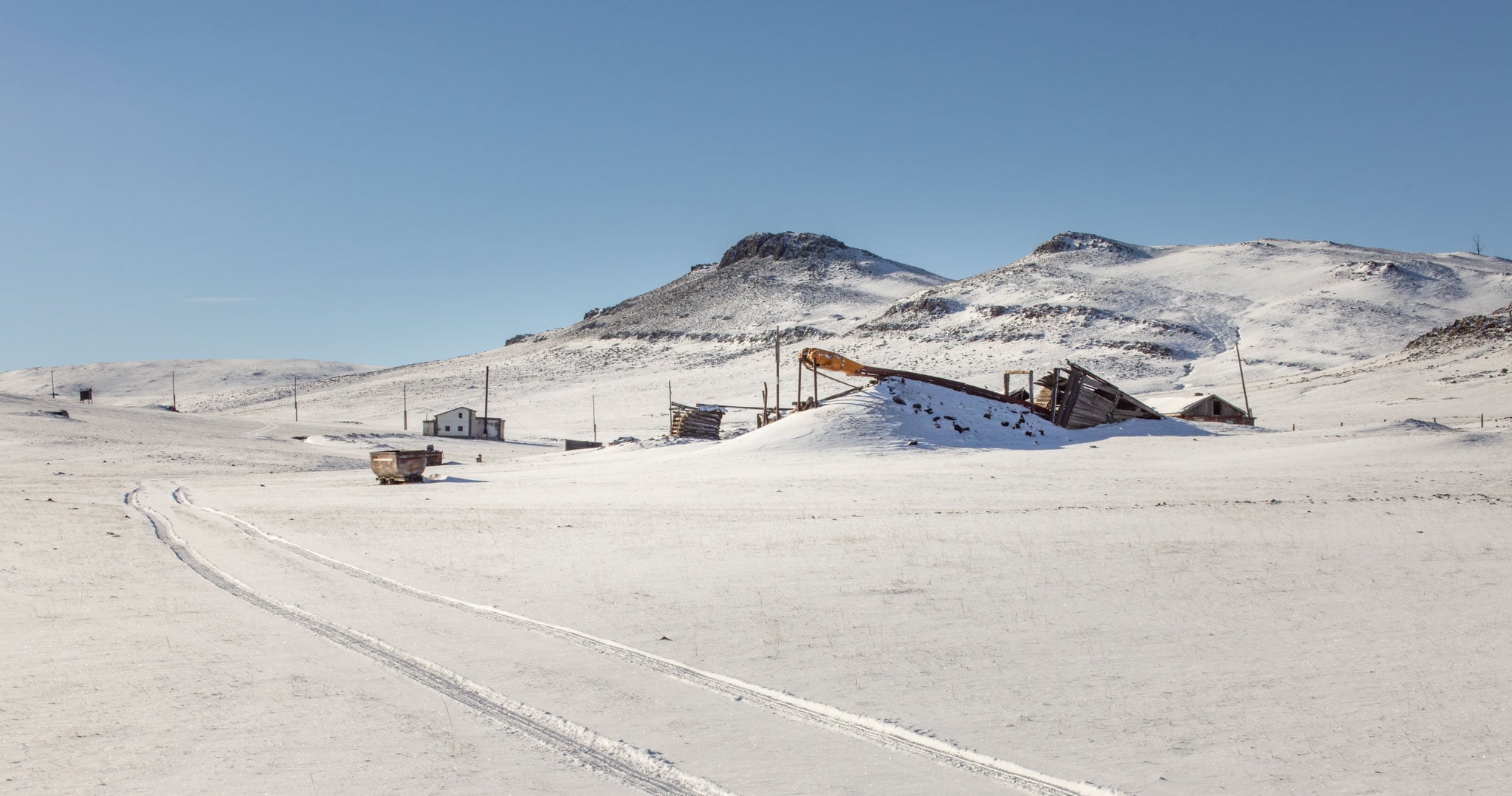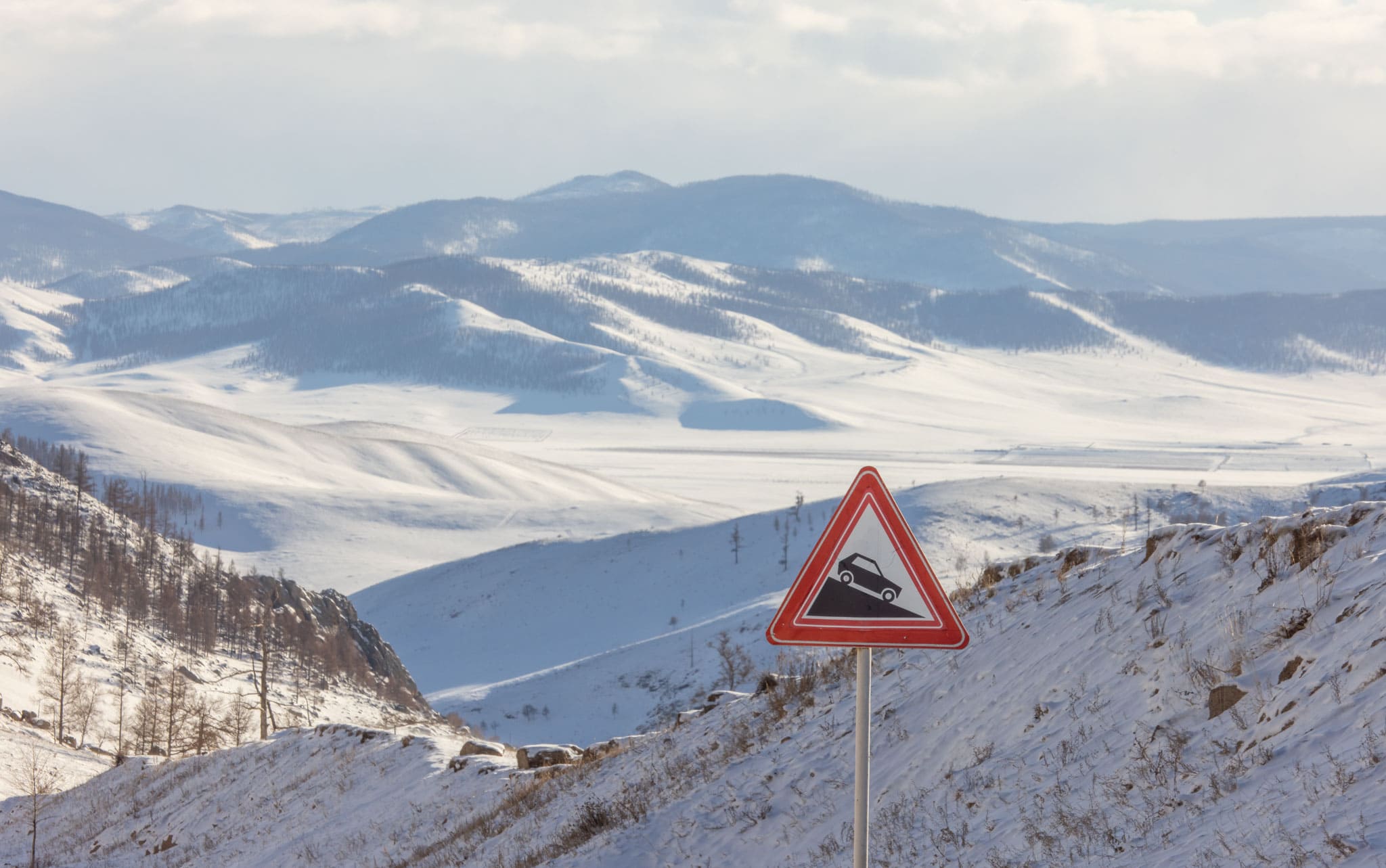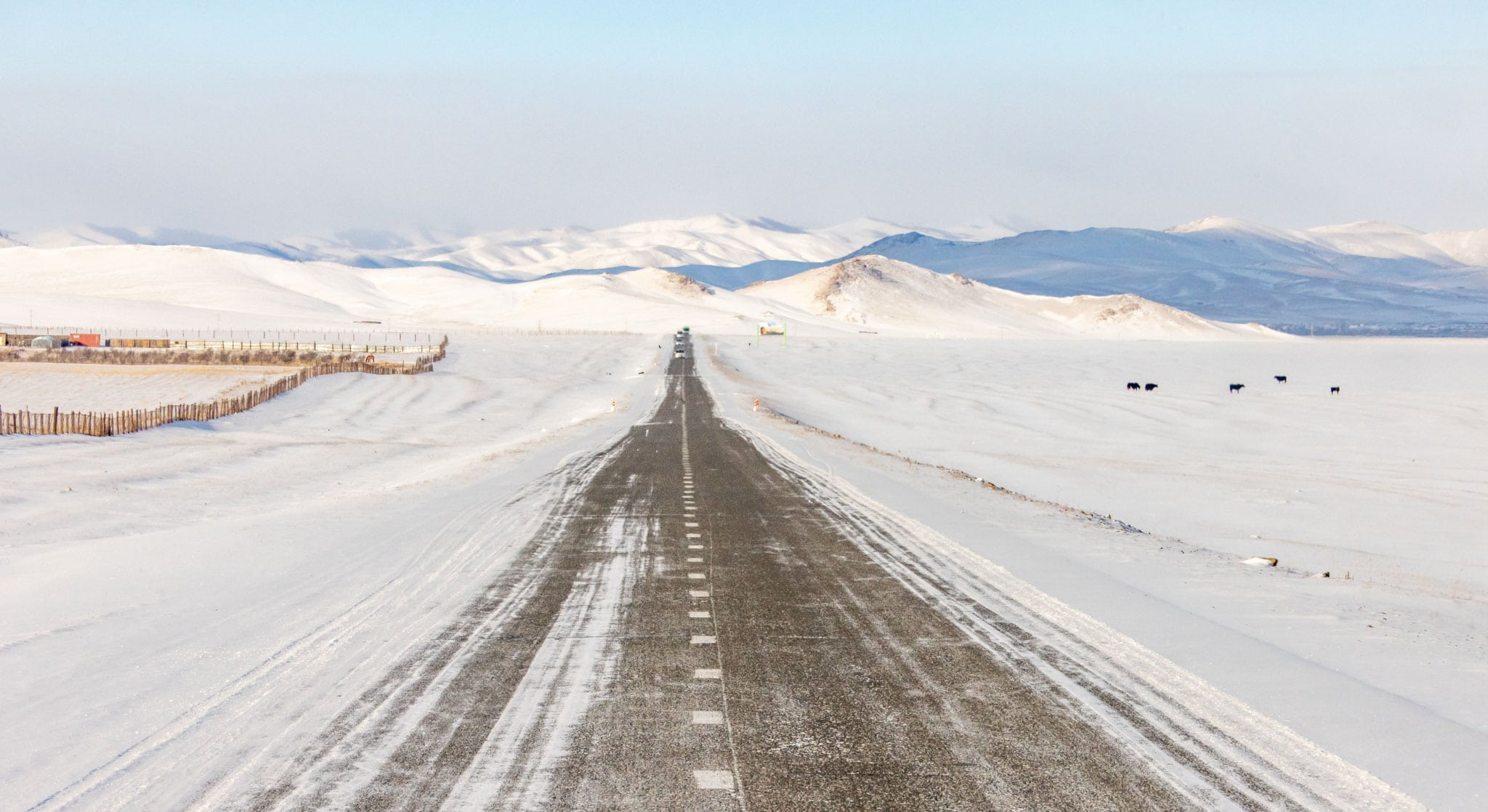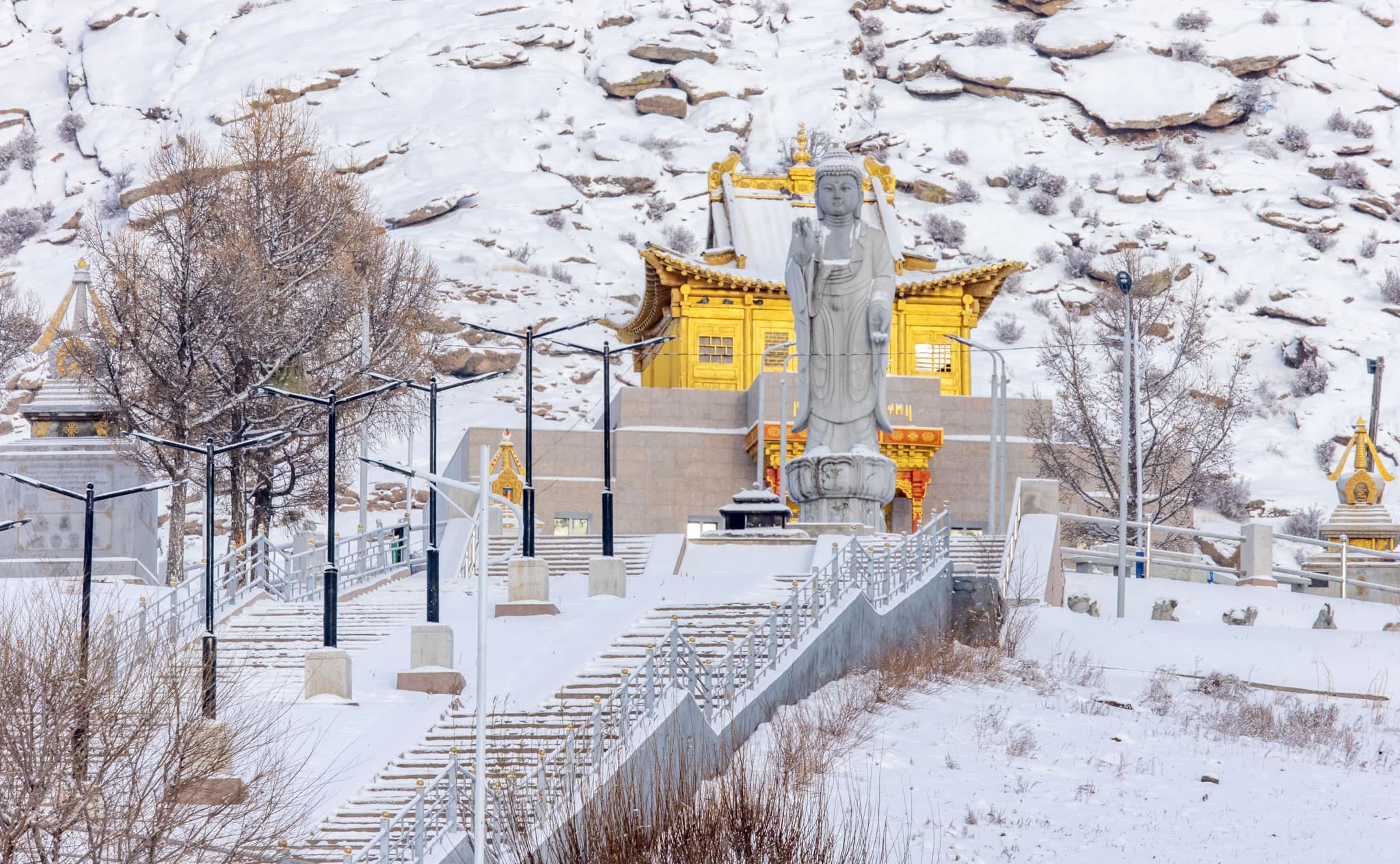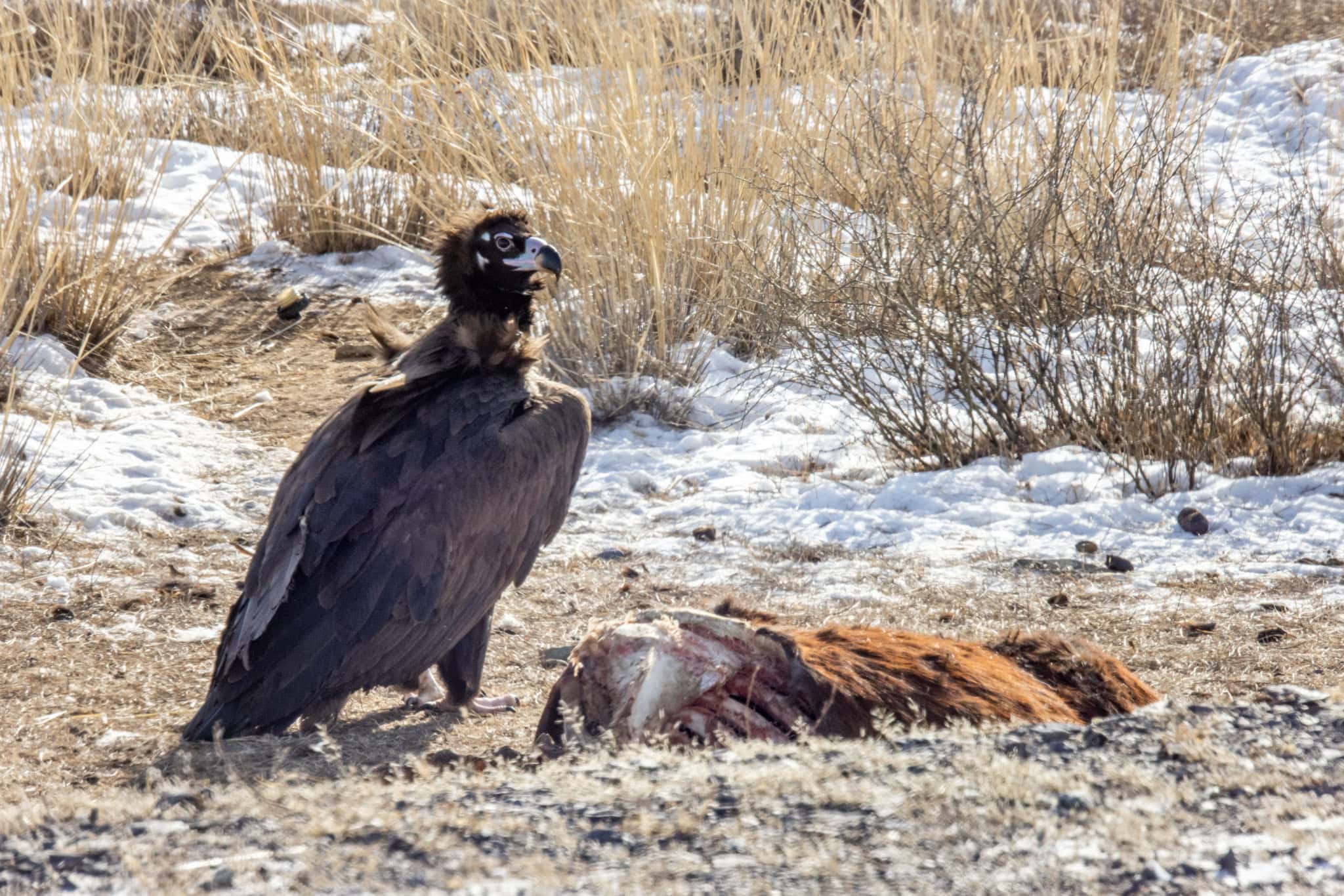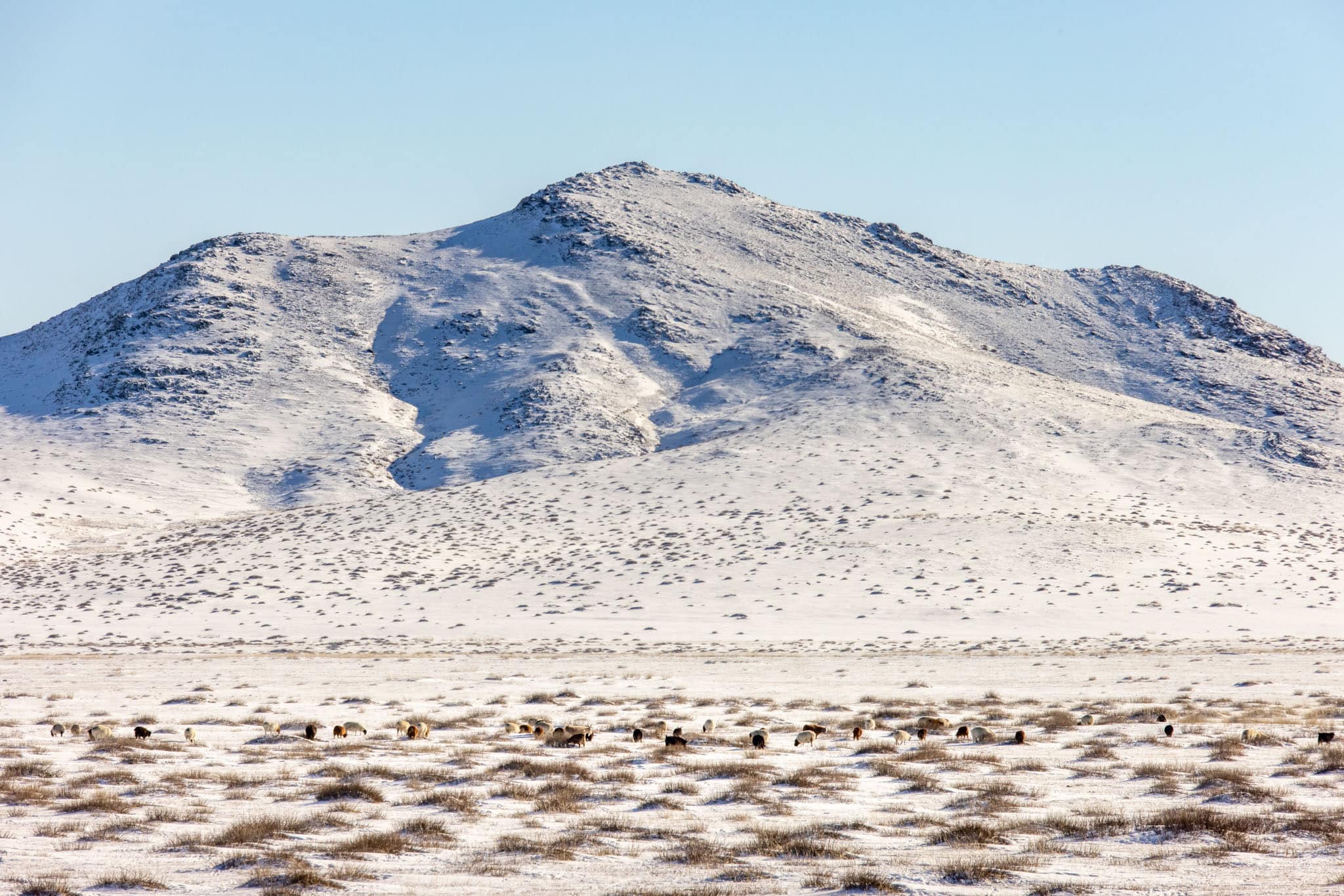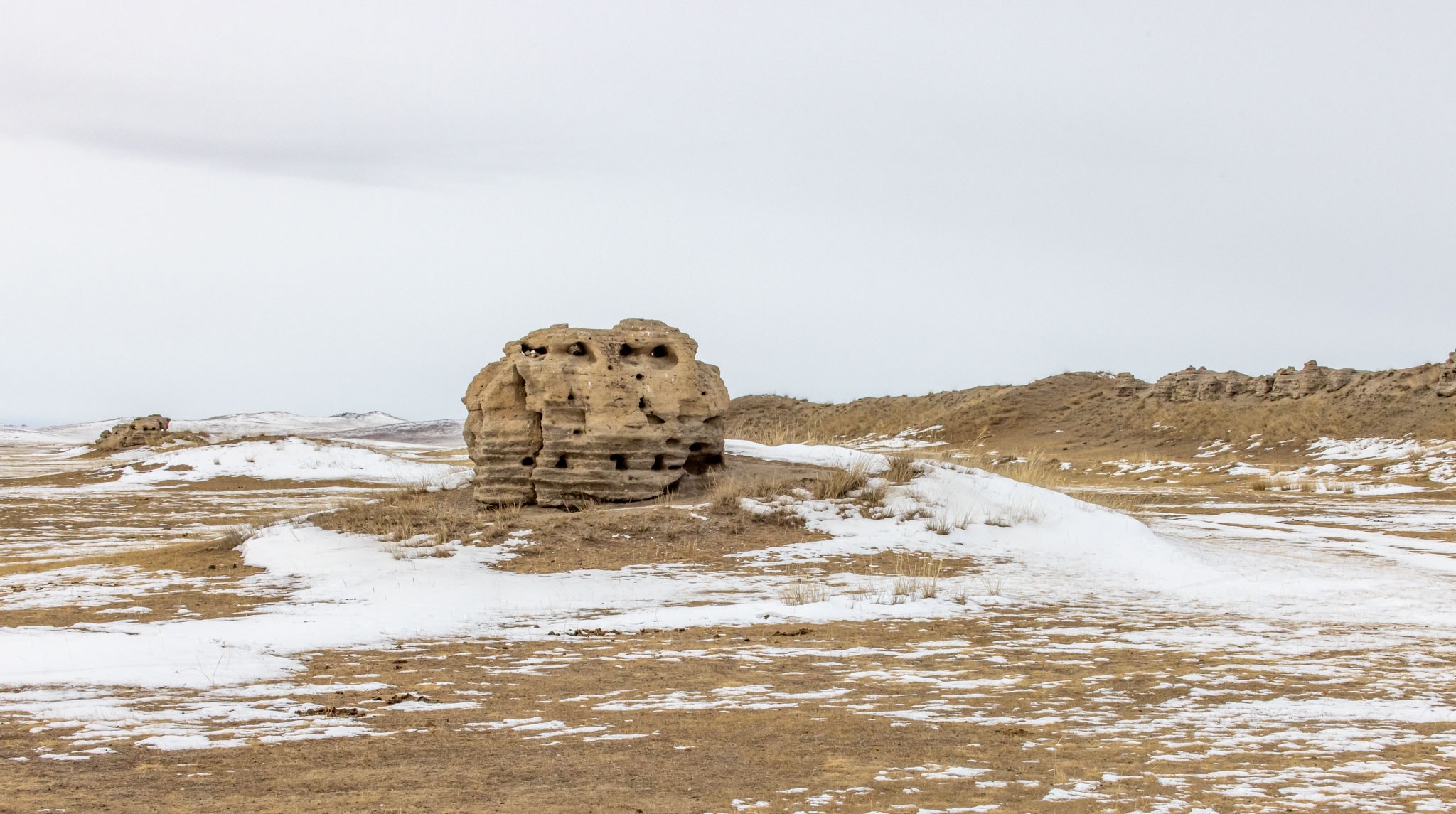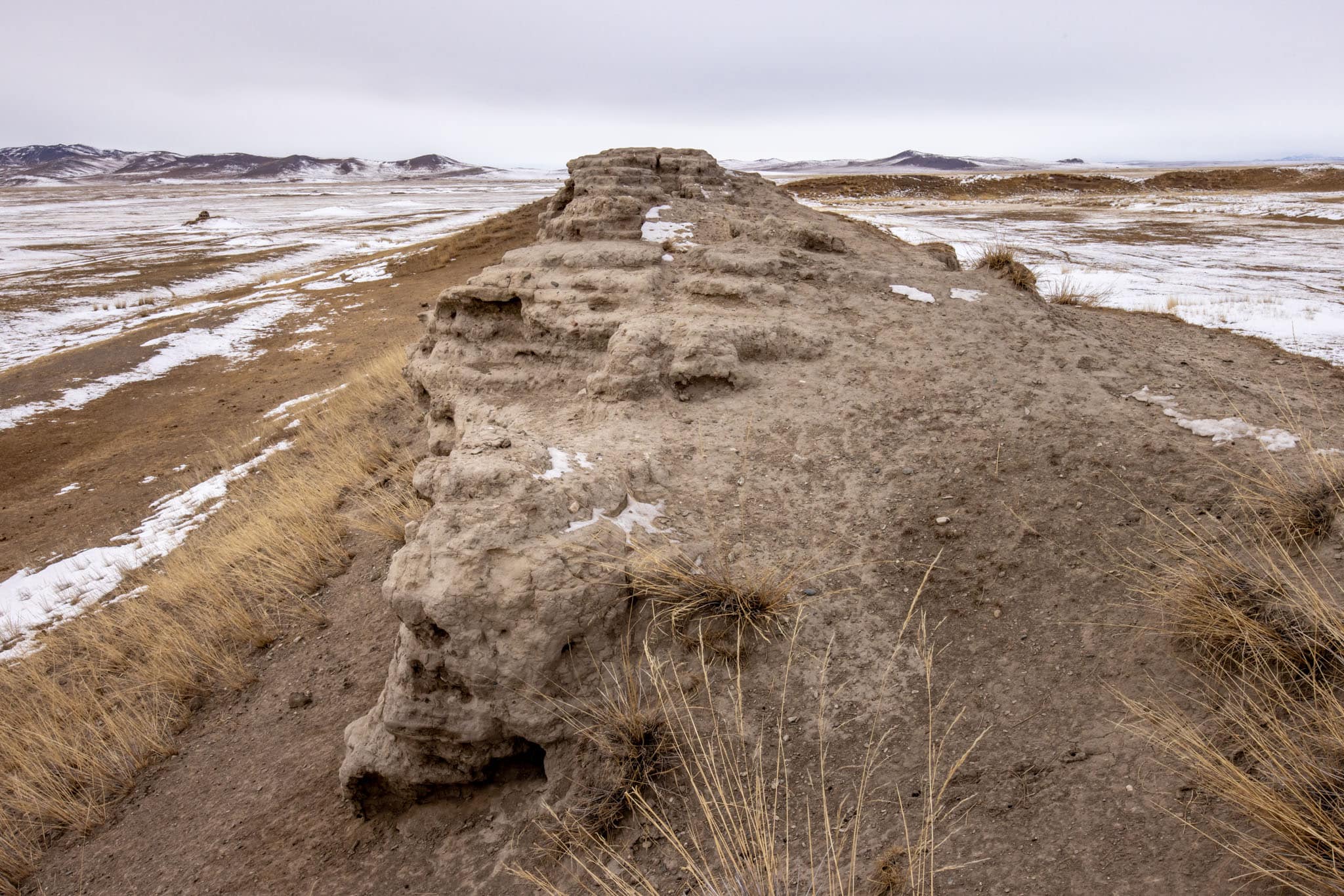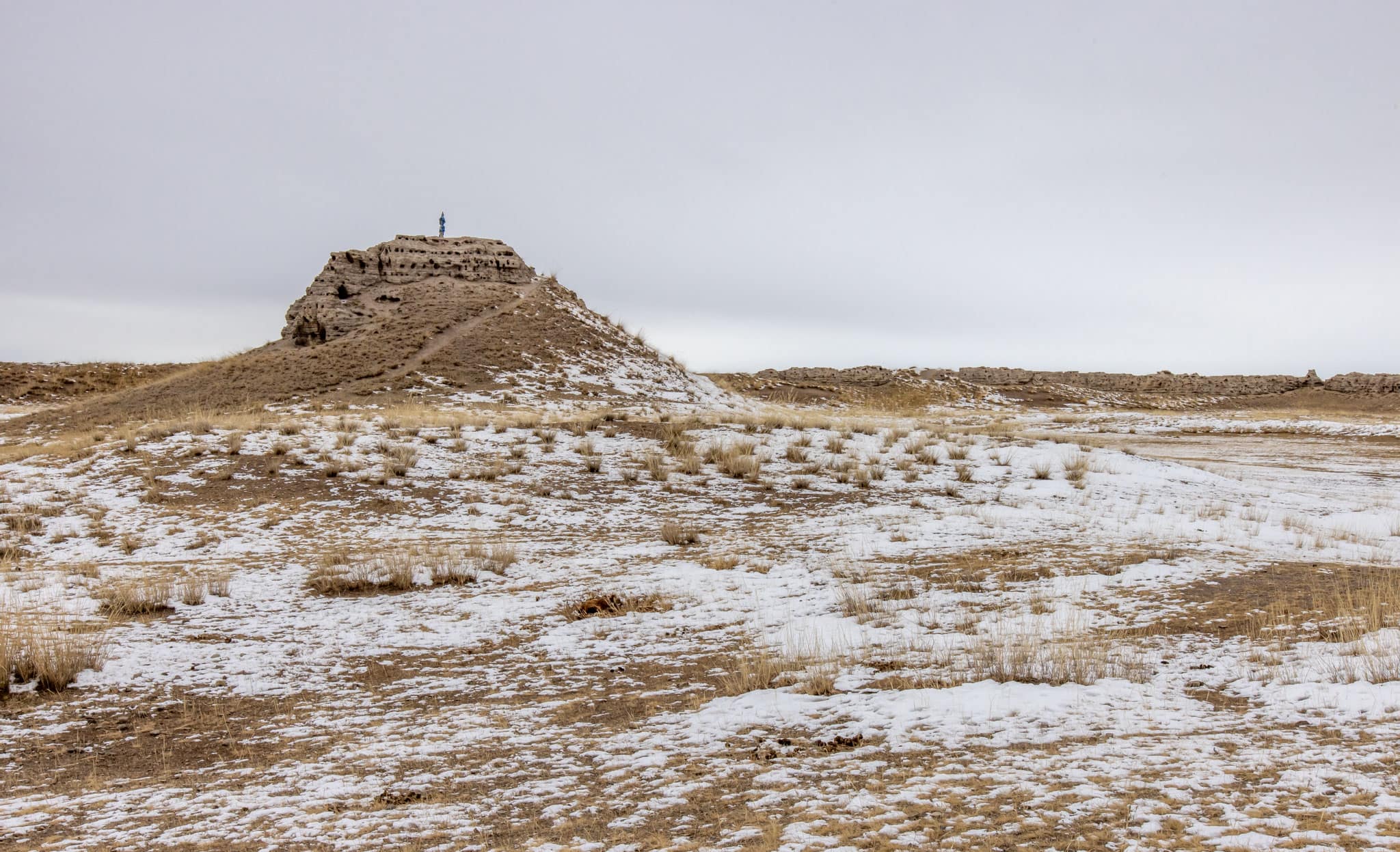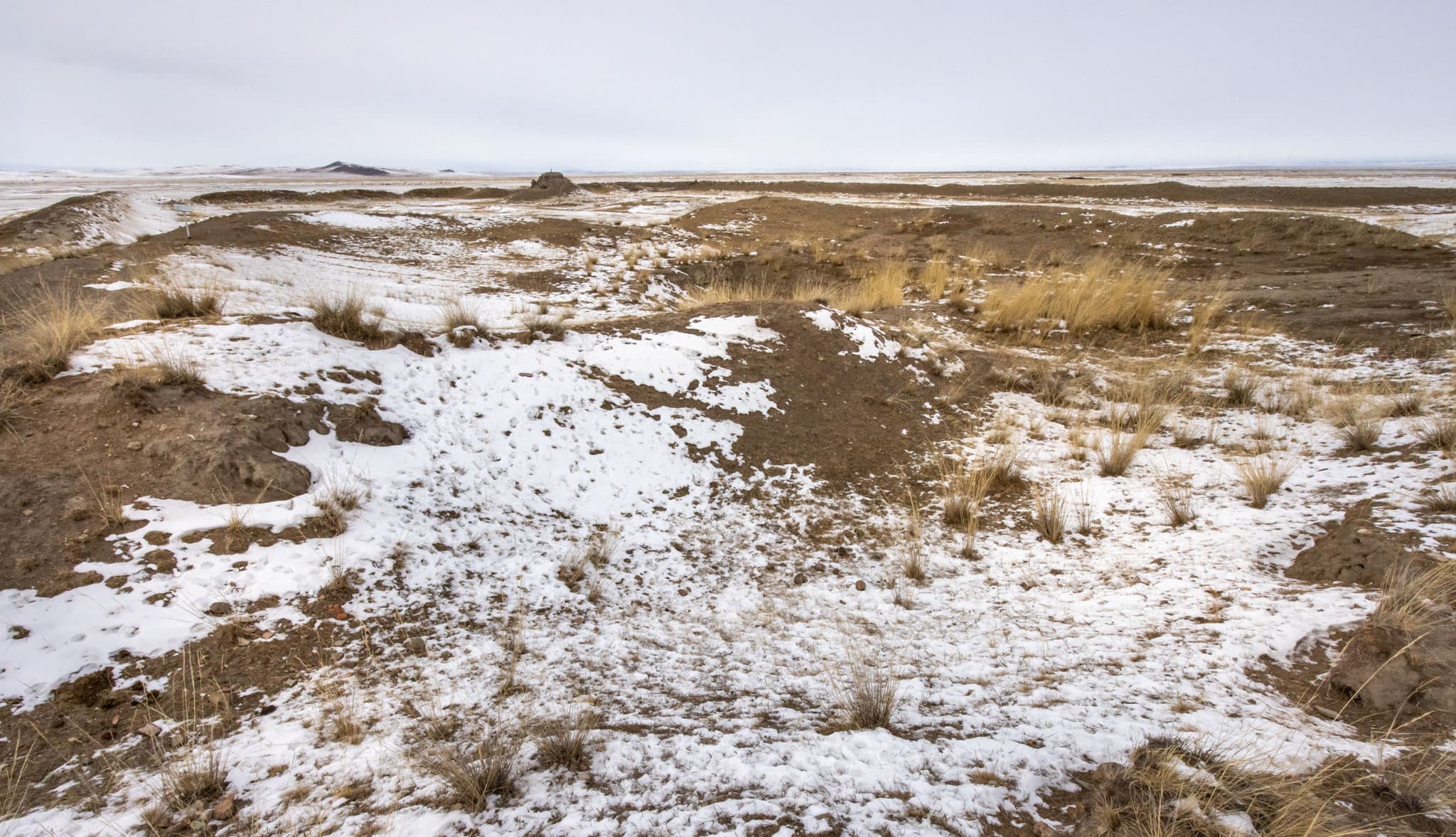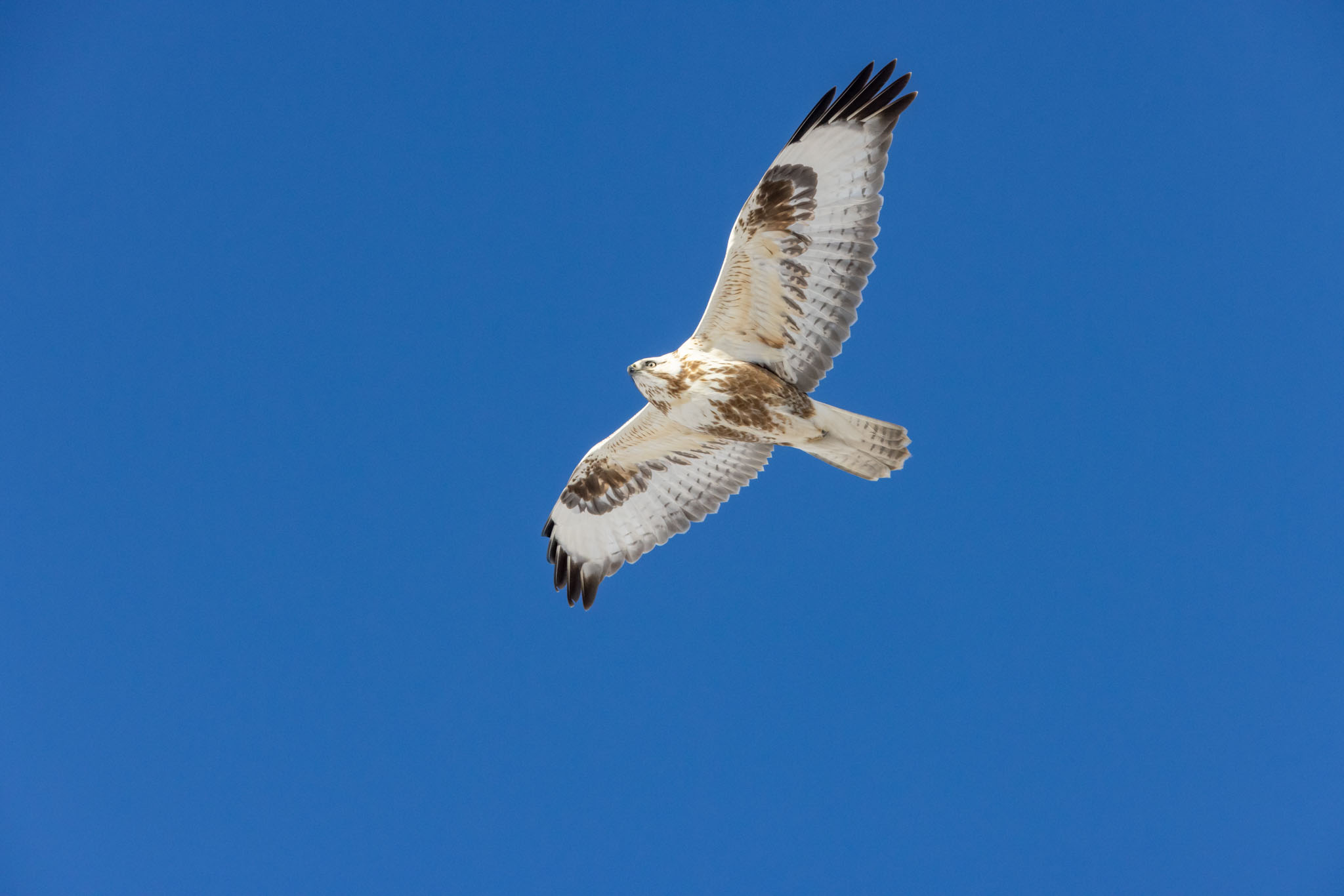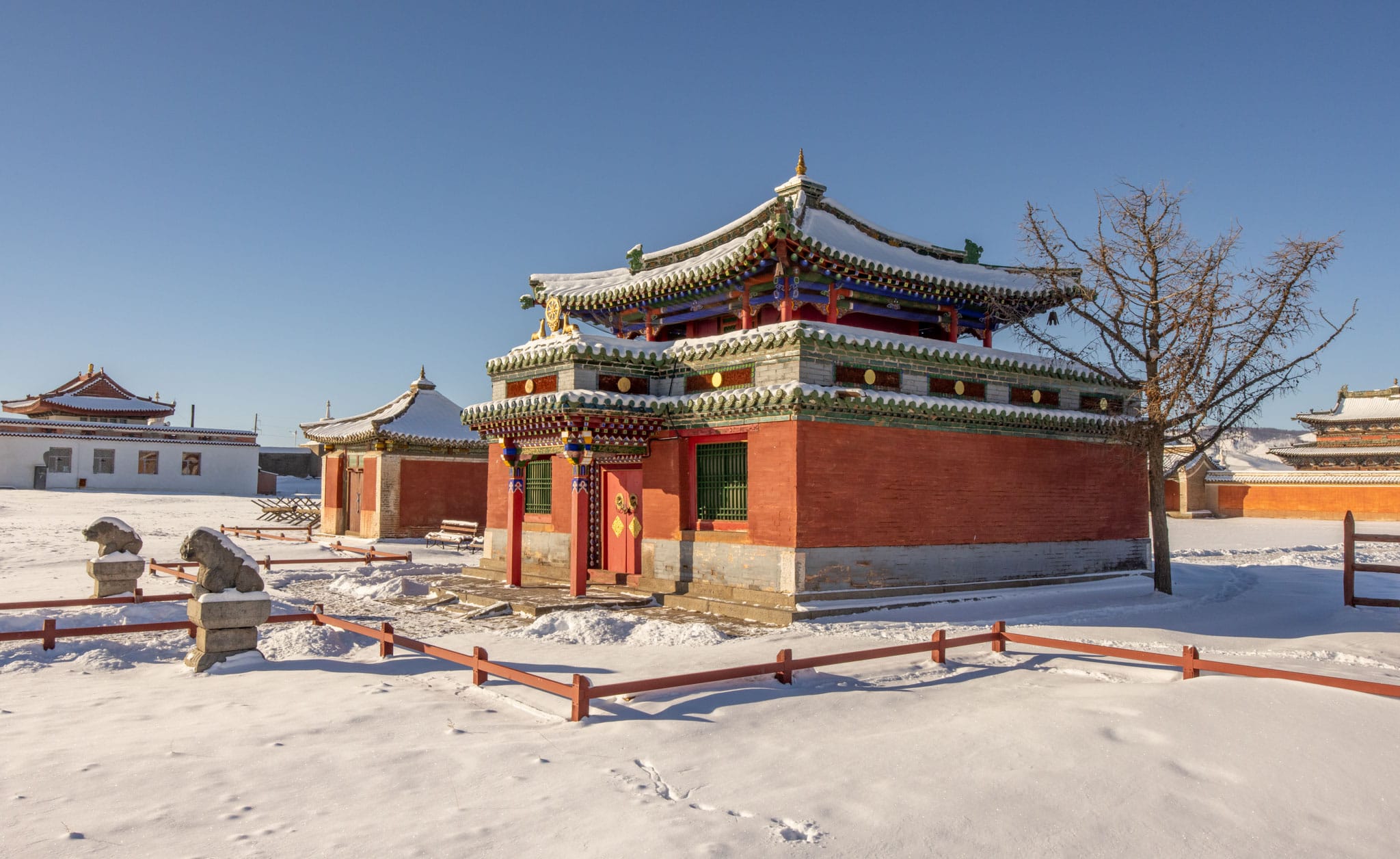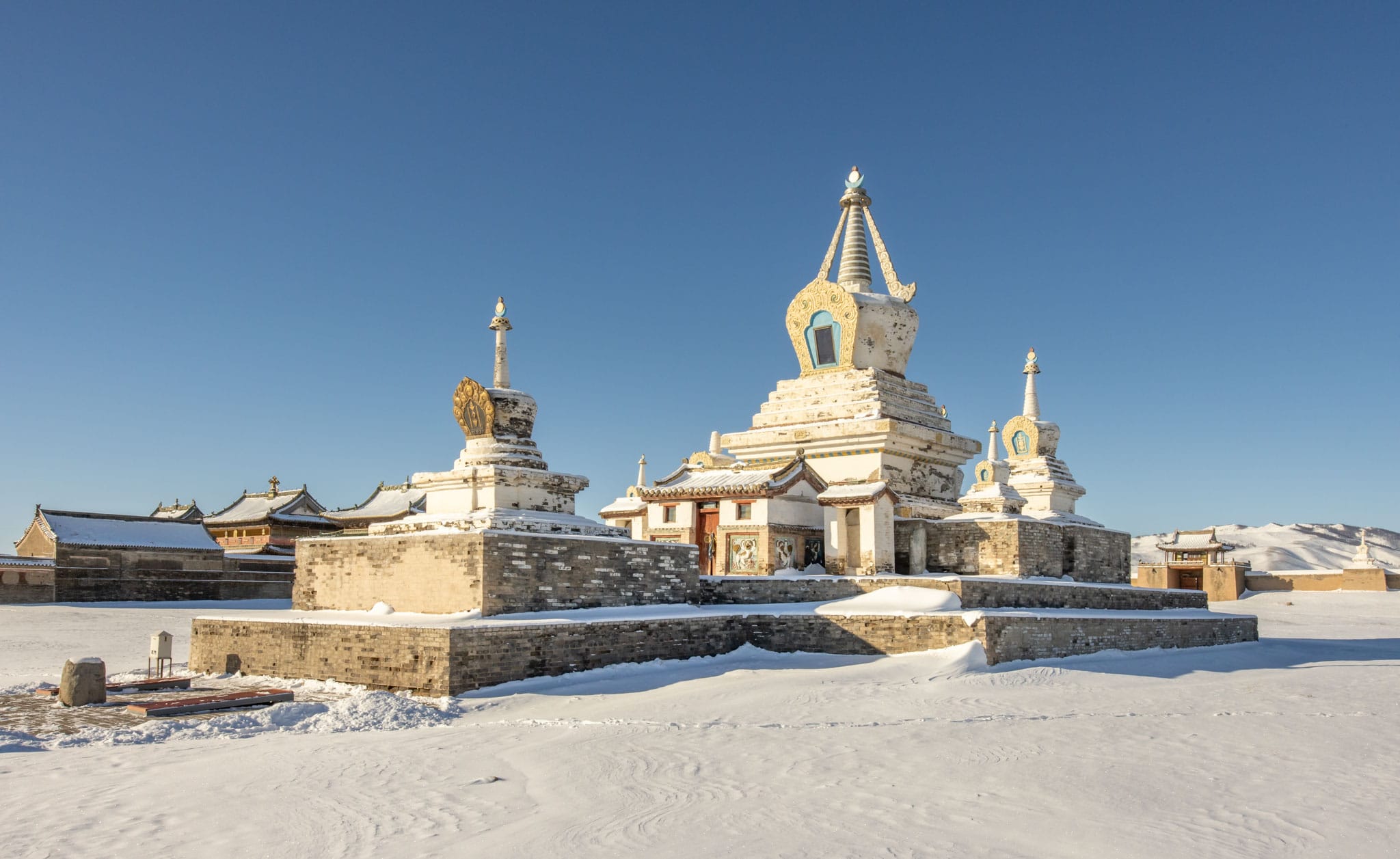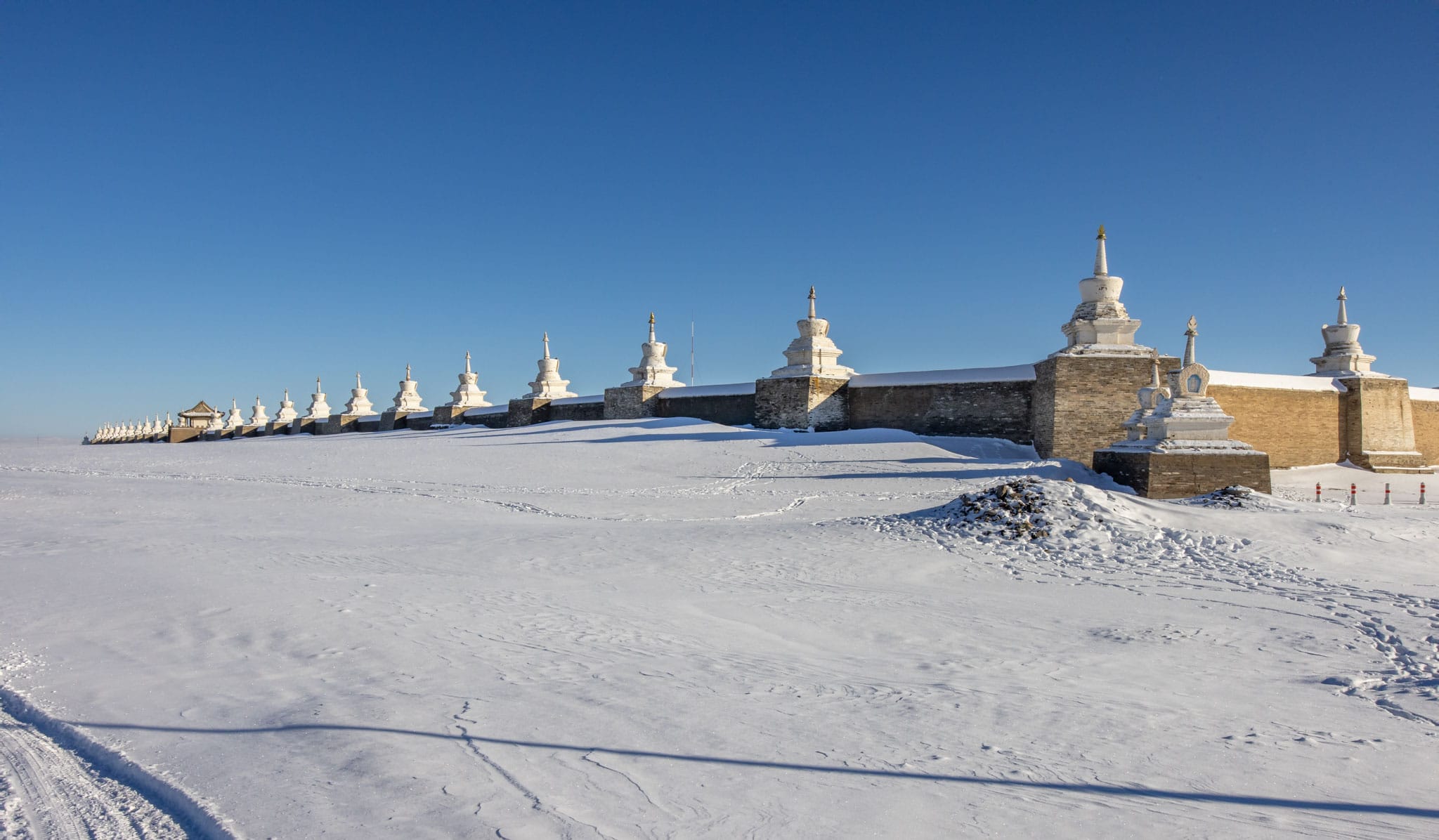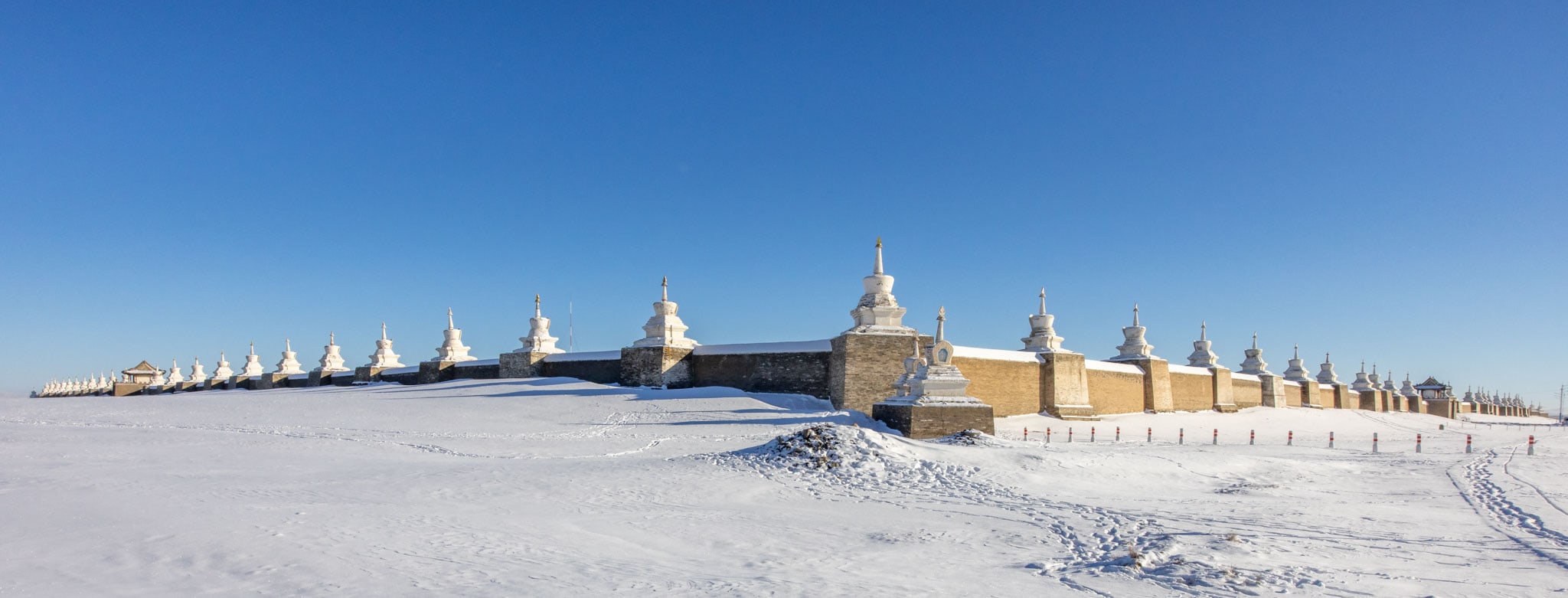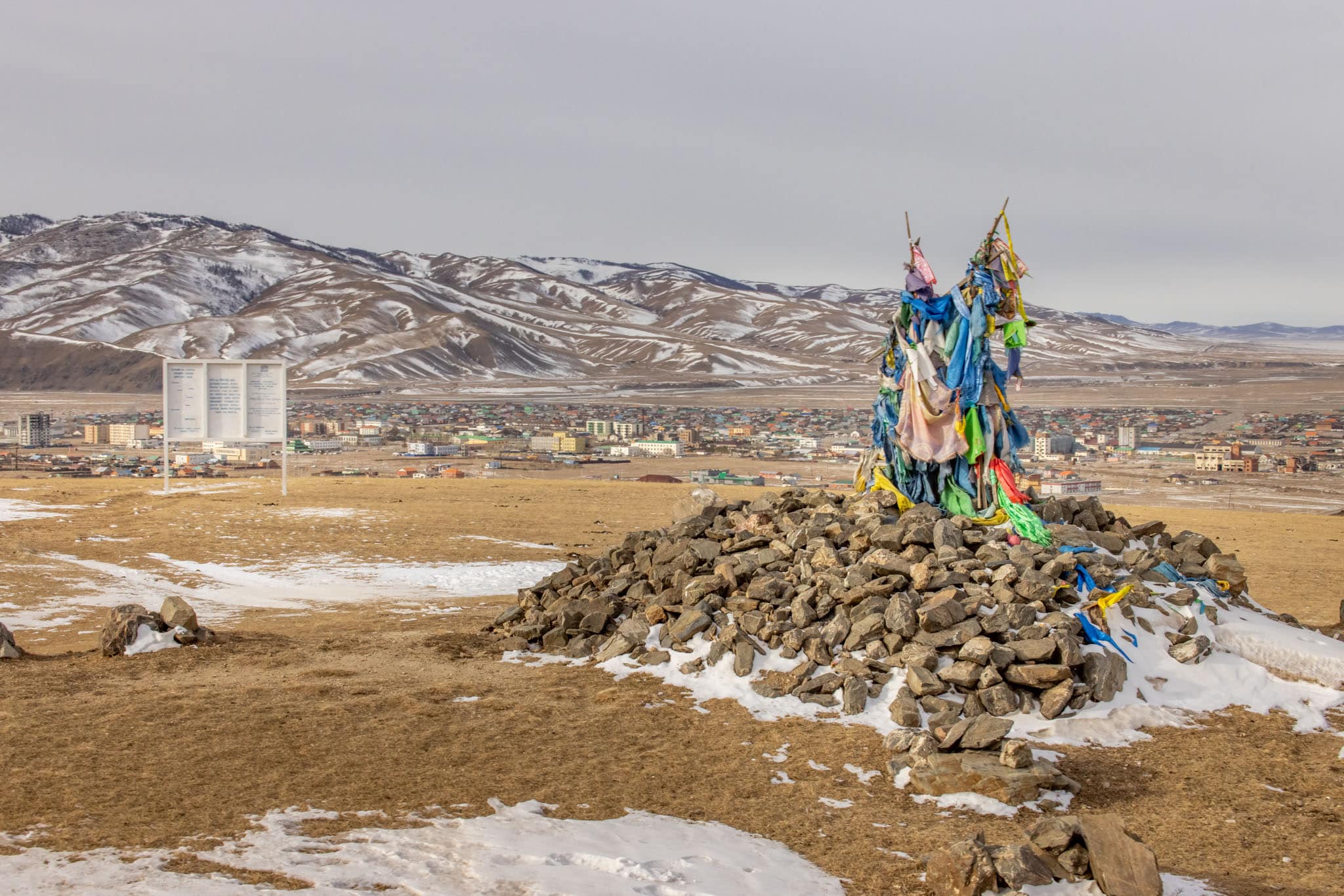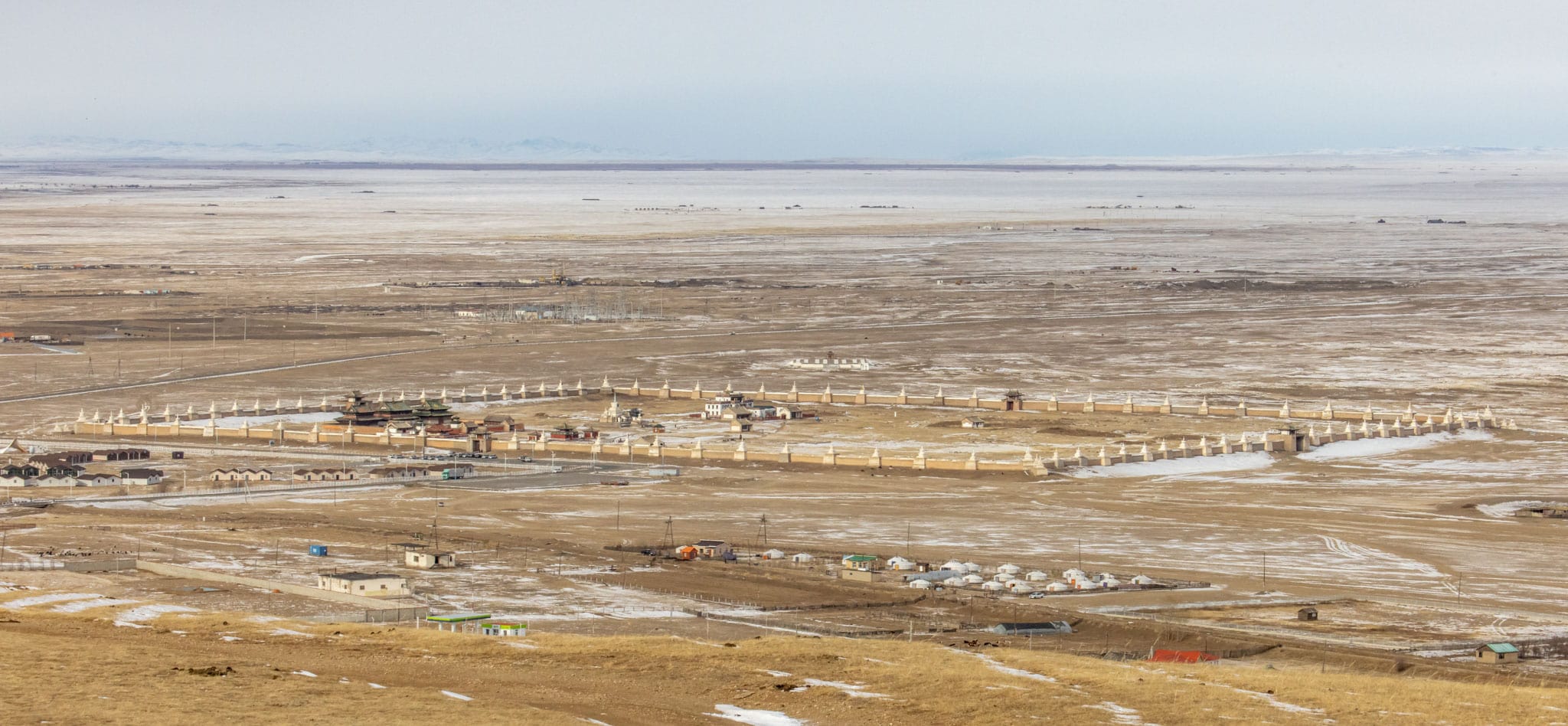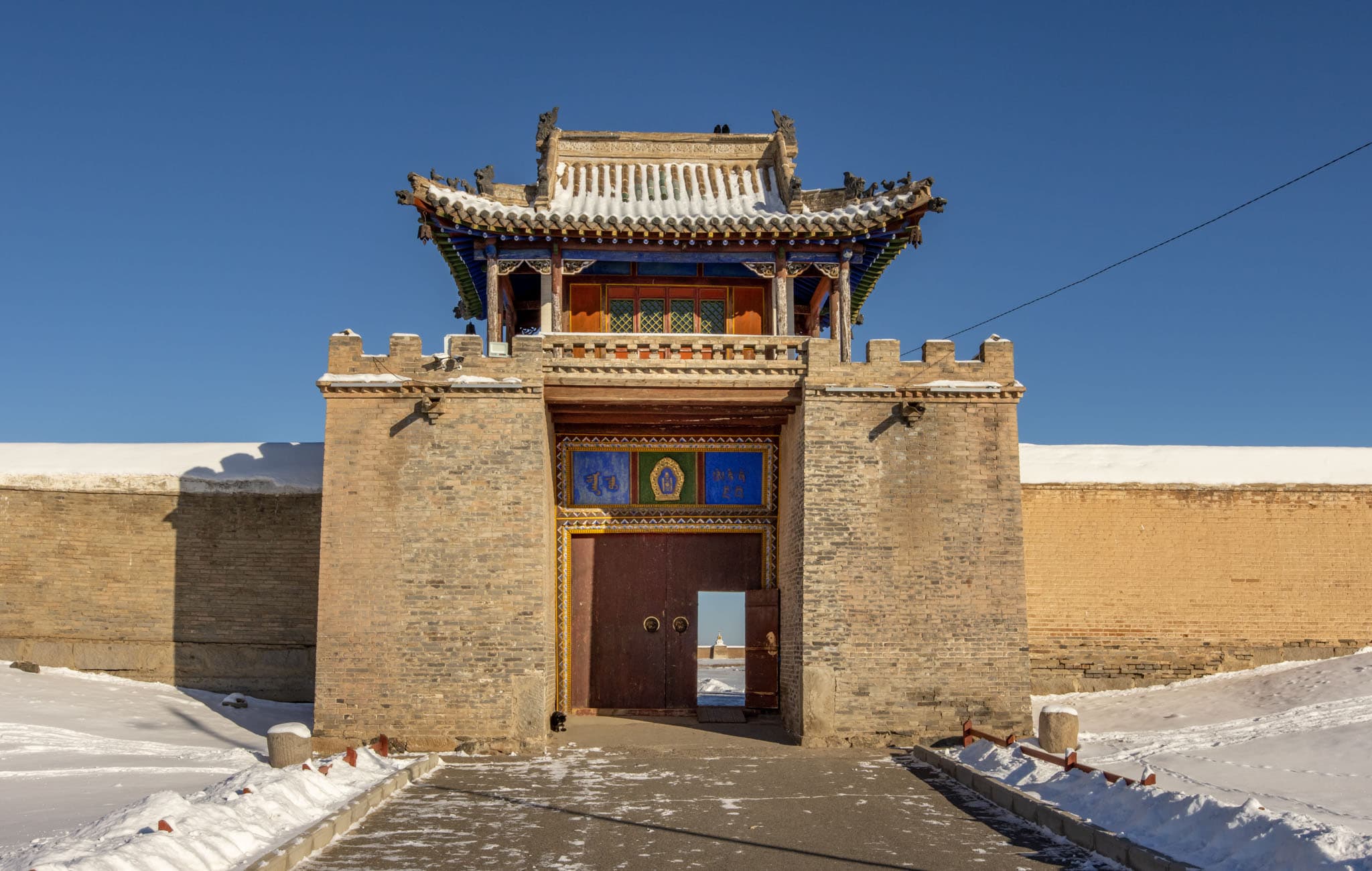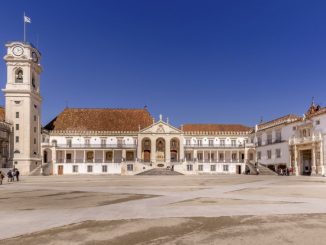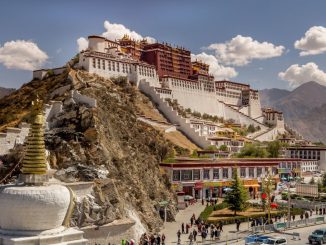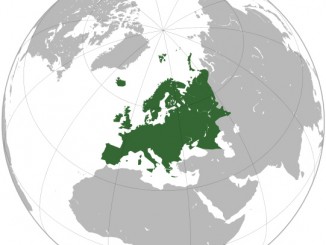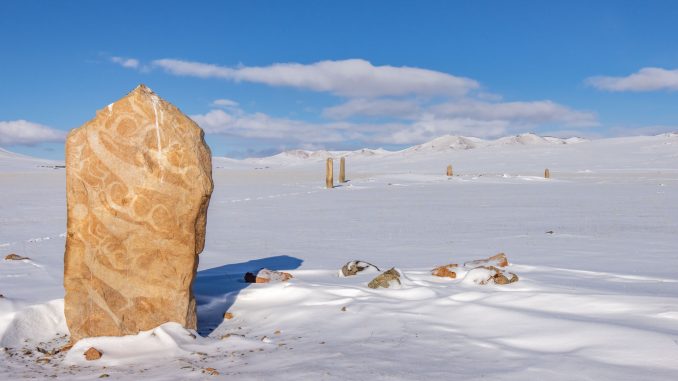
Table of Contents
- Planning a winter trip to Mongolia
- Mongolia itinerary day 1: Start of the Mongolia winter expedition
- Mongolia itinerary day 2: Ulaanbaatar to Tsetserleg with a visit to the Orkhon Valley
- Mongolia itinerary day 3: Mongolia winter expedition to see Deer Stones
- Mongolia itinerary day 4: Back to Ulaanbaatar
- Mongolia itinerary day 5: Flight to Beijing
- Gallery
Mongolia is one of those countries that has been on my bucket list for a long, very long time—probably since childhood. I made the below Mongolia itinerary a couple of years ago. Recently, I finally had the opportunity to visit. Originally I planned for early October, when the weather would (still) be great, but due to a delayed business trip, it was rescheduled to late November. This meant winter time, with cold temperatures and the risk of a lot of snow, which would render visiting the Deer Stones at the Khoid Tamir valley impossible. The other site, Karakorum, is always accessible unless there is a lot of fresh snowfall. Would I recommend going in winter? Continue reading to find out why you should and how to arrange it safely.
Planning a winter trip to Mongolia
A visit to Mongolia needs some good preparation especially in winter. The focus of my trip was on two UNESCO sites which are located southwest of Ulaanbaatar. I would say that the Orkhon Valley, especially Karakorum, can always be reached easily if the road is cleared regularly. The other places of interest depend on snowfall. The Deer Stones in the Khoid Tamir valley can be reached from Tsetserleg if there is not too much new snowfall; otherwise, the road is closed. For this, hire a 4×4 car with a driver who knows how to drive in the snow. It is better to be with two people or even two cars and one person who can speak the local language. In summer this trip could easily be done solo though.
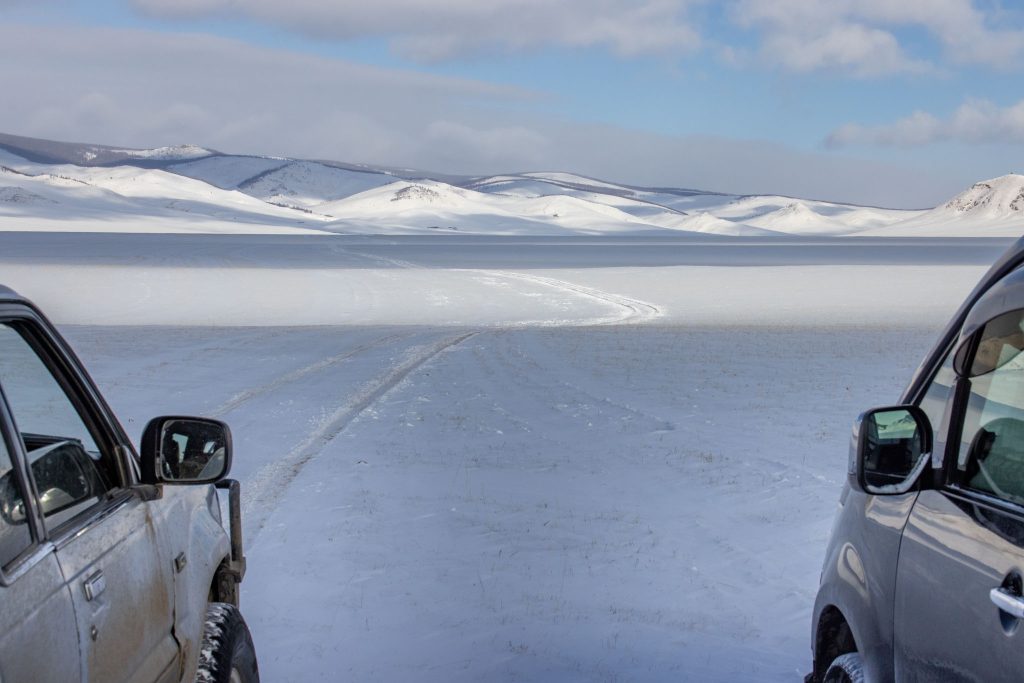
Mongolia Visa and Flights
Mongolia has a visa-free entry option for 30 days for a lot of nationalities until the end of 2025 to promote tourism. Do check with your local embassy if you can enter for free as well. I arrived on a direct flight on MIAT airlines from Frankfurt. Their new B787 Dreamliner is perfect!
As it was winter with temperatures up to minus 26 Celsius (minus 15 Fahrenheit), I decided to not stay at a local camp but at a nice hotel instead. In Ulaanbaatar I stayed at the Blue Sky hotel which has awesome views. In Tsetserleg at the recently opened Ashid Bekhi hotel. I can recommend both.
Clothes for winter in Mongolia
Make sure to bring warm clothing in layers. I bought special merino wool underwear which in the end I didn’t use. I was in jeans, sweater and winter jacket all the time. Minus 26 in Mongolia feels much warmer than in other areas due to low humidity. I only regret not taking proper boots as my sport shoes were not the best choice for warm feet. Common sense is required and do not underestimate the cold!
Now let’s look at the day by day itinerary of this Mongolian winter expedition.
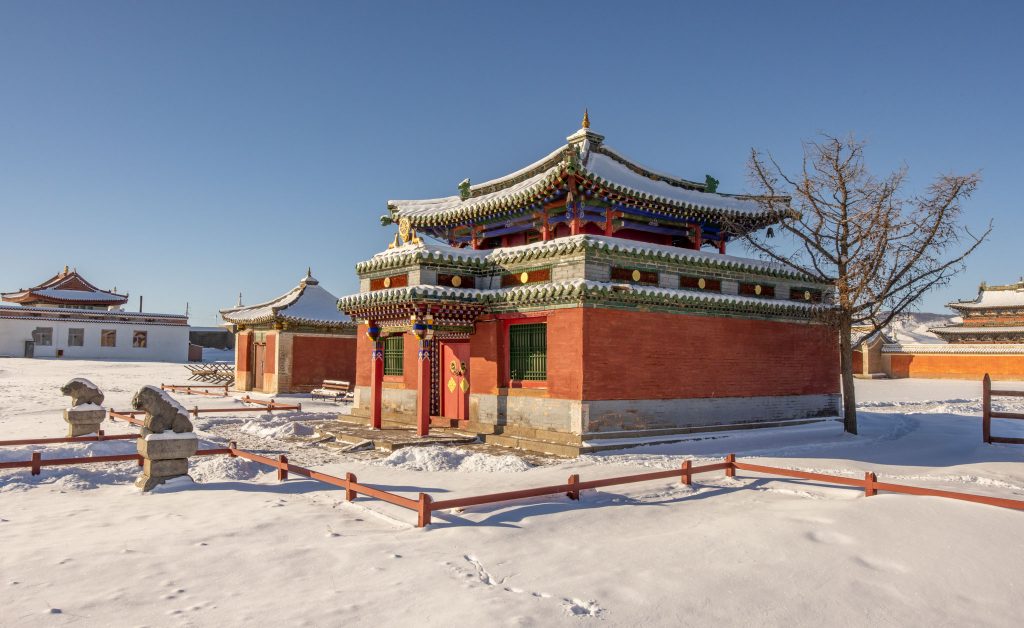
Mongolia itinerary day 1: Start of the Mongolia winter expedition
I departed from home early morning by train to Frankfurt. The direct MIAT (Mongolian Airlines) flight from Frankfurt, which is just a four-hour train ride from my home, was very comfortable. Their new Boeing 787 Dreamliner has great business class seats. The downside is the timing of the flight. With an afternoon departure, it means an arrival time of about 6 AM. It was still late evening back home so sleeping was difficult but the The Blue Sky Hotel and Tower hotel let me check in early to catch up on sleep. I slept till late morning.
After lunch, I had some free time to explore Ulaanbaatar. Although the capital doesn’t have that many places of interest, an afternoon is easily filled. Just across the street from the The Blue Sky Hotel and Tower hotel I explored the Chingis Khaan Square. I then continued to the The Fine Arts Zanabazar Museum and the Chinggis Khaan National Museum before it was time for dinner.
Dinner in Ulaanbaatar
There is one craft beer brewery named MB Beer Plus in Ulaanbaatar so I had to check it out. Just a couple of minutes walk from the hotel. At minus 25 degrees Celsius this short walk was alright in normal clothing. Their food is good and the beer delicious so I recommend going. After testing all their beers, just four, I was back in my room early evening for a good rest as the coming days would be long ones.
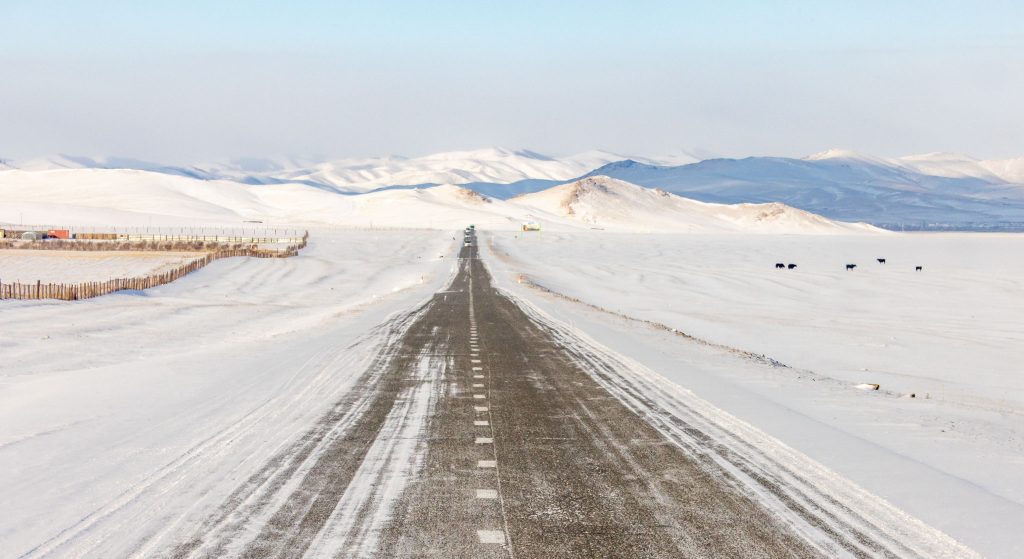
Mongolia itinerary day 2: Ulaanbaatar to Tsetserleg with a visit to the Orkhon Valley
I recommend, especially in winter, to start early around 8 AM as road conditions are unsure. All the roads are well-paved though with some stretches a bit patchy. That is, however, not the main problem during wintertime; it’s the snow. Although roads get cleared, it will be a difficult drive just after new snow and might make reaching Tsetserleg in a day impossible.
It took way over an hour to even leave Ulaanbaatar, but once I was out it seemed to be a great drive. Clear skies, sunny with plenty of snow but not on the roads. The views are amazing the whole way to Karakorum in the Orkhon Valley. It’s endless snowy steppes with snow-capped mountains in the back. Nomads have prepared their winter camps and here and there I saw groups of horses trying to find some last grass to eat.
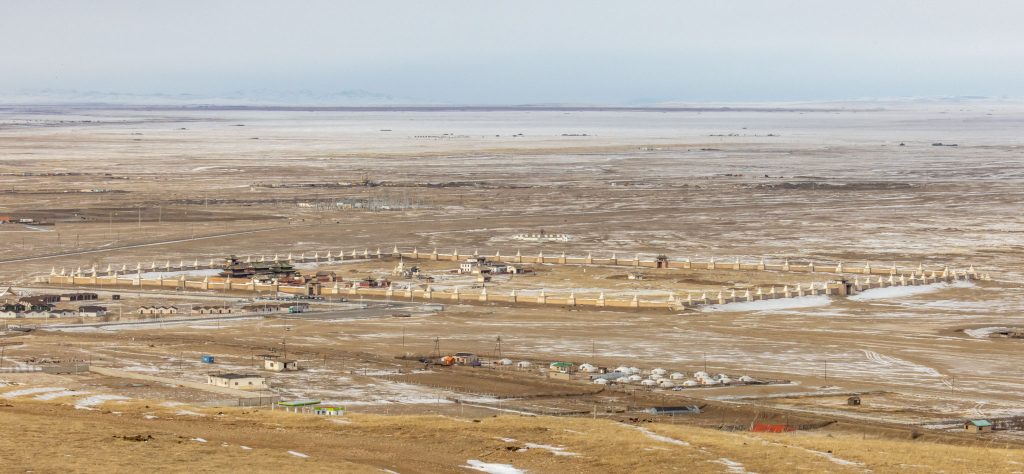
Best Erdene Zuu viewpoint
It was already 2 PM when I arrived at Karakorum. Just before the city on the left, there is a great viewpoint of the Erdene Zuu monastery. If the weather is good, make sure to visit it directly as with snow, driving up becomes impossible. The next stop for the day was the Khar Balgas Ordu Baliq deep inside the Orkhon Valley, a UNESCO World Heritage Site. It is about 20 kilometers off-road and possible only if there is not too much snow unless you are with multiple cars. There are ditches everywhere and the tracks are not visible so you will get stuck and one needs more cars to pull another out then.
Mongolia
Visit Khar Balgas Ordu Baliq
The Khar Balgas Ordu Baliq is, although quite eroded, very impressive. The walls are clearly visible with its defensive towers just outside the walls. Inside, there is a well-preserved pagoda, a well, and minor other structures left. Khar Balgas, also known as Ordu Baliq, stood as the capital of the Uyghur Khaganate, an influential Turkic empire of the 8th and 9th centuries. Situated in present-day Mongolia, it played a pivotal role as a stop along the Silk Road, reflecting its significance in trade and diplomacy. The city, characterized by its nomadic lifestyle, was rich in cultural diversity, with influences from various religions. Its historical importance extends to its diplomatic ties with the Tang Dynasty in China. Khar Balgas remains a fascinating site of ongoing excavation, shedding light on the vibrant history of the Uyghur Khaganate.
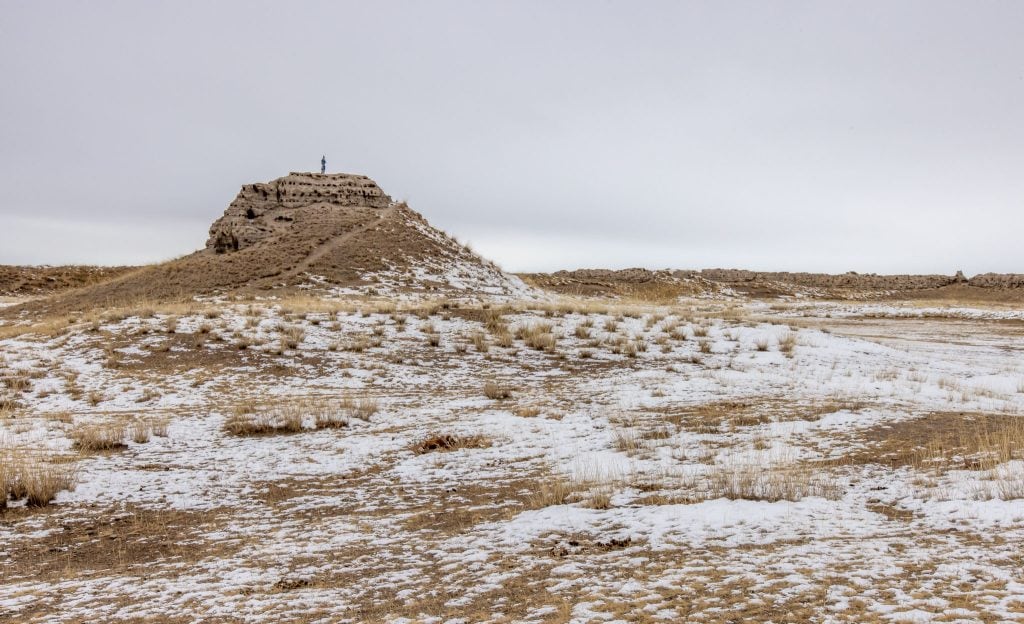
The site is not huge and a visit takes about an hour. With temperatures at minus 25 degrees Celsius (about minus 15 Fahrenheit) that was long enough. The sun was setting as well so a must to get back to the road before nightfall.
It was another two hours’ drive to Tsetserleg where I arrived around 7 PM. I chose the Ashid Bekhi hotel which is a new and modern hotel, a bit pricey, but with the cold weather a good choice. A local dinner I had at the Fairfield Guesthouse a block away. It started snowing in the evening so the winter expedition to the Deer Stones in the Khoid Tamir valley for the next day became unsure.
Mongolia itinerary day 3: Mongolia winter expedition to see Deer Stones
A visit to the Deer Stone Monuments and Related Bronze Age sites, a UNESCO World Heritage Site, in the Khoid Tamir valley was the main goal of this trip. It would take in summer half a day but in winter it’s a long day, a very long one. The road from Tsetserleg to Ikh-Tamir is paved but it goes over a pass with a rather steep climb. This pass does close after fresh snowfall which I was afraid of would make a visit impossible today. I was lucky however that there was not too much snow there and at 10 AM the pass was open. Once in Ikh-Tamir the final stretch would be about 15 kilometers off-road.
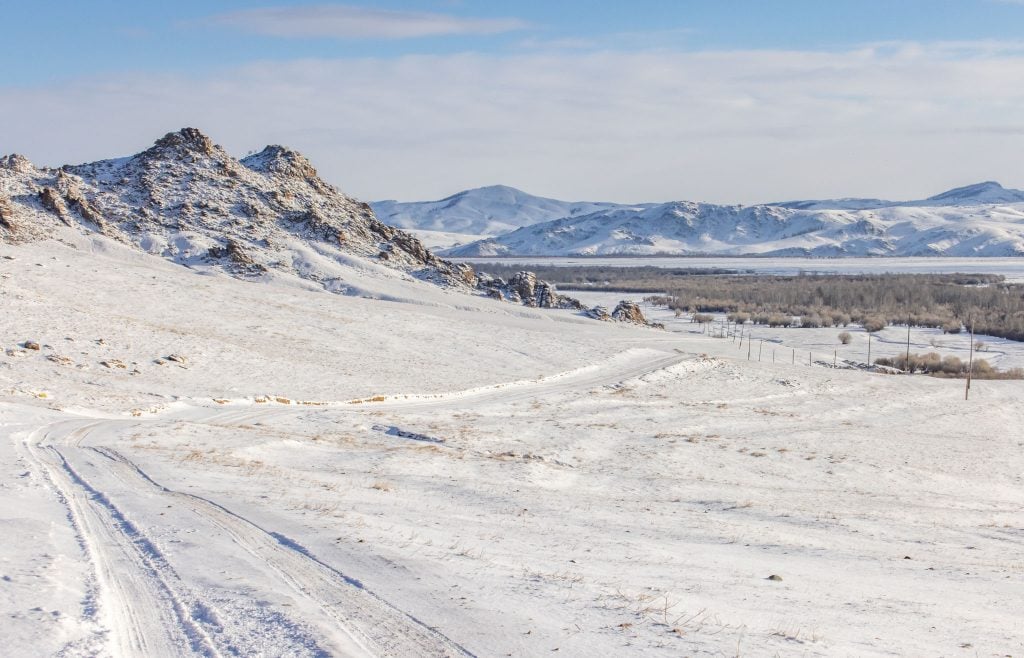
The first 10 kilometers were very smooth and the last 5 could have been if I didn’t take the wrong turn. The road follows the valley river on the left side and before the Deer Stones location there is a mountain on the left. Behind that mountain is another valley. In summer one can take a left before the mountain and just drive around. In winter this was a bad choice. At some point the road tracks were difficult to follow. I had to make new tracks which ended up in a ditch and got completely stuck with the car.
Stuck in the snow in Mongolia
After trying to get out, which didn’t work, the best would have been to walk to the nomad camp that was just a kilometer or two away. Luckily, a car driving the same way saw me and came to the rescue. It was a police officer and he helped the car to get free. He said to follow him to the Deer Stones which where near his house. These were however the ones at Jargalantyn Am, which I also wanted to visit, and about 7 hours away. After a 45-minute drive I figured out it was the wrong direction so I turned around. The plan was to drive back around the mountain but just before it a clear track to the left was visible. After a couple of kilometers I arrived at the destination. I really felt that wow moment here. Standing alone in the middle of nowhere surrounded by snow and mountains looking at a Deer Stone carved centuries ago.
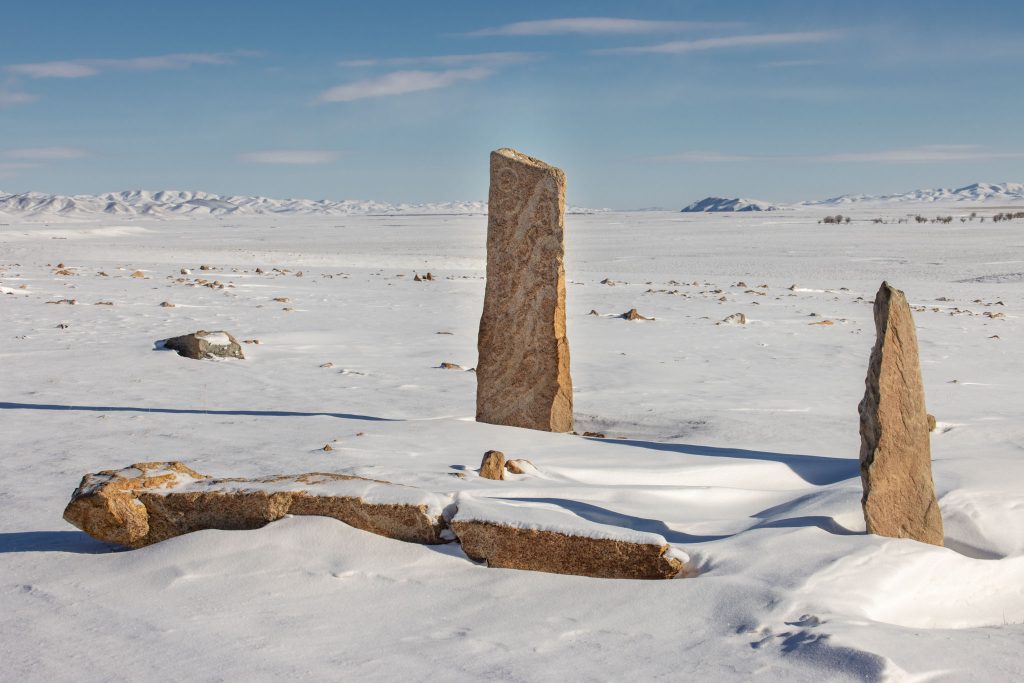
Mongolian Deer Stones history
Deer stones are ancient monoliths found in Mongolia, dating back to the Bronze Age, primarily between 1300 and 700 BCE. They are characterized by their carved images of deer, as well as other animals and symbols. These stones were likely used for ritualistic or ceremonial purposes, possibly as markers for graves or sites of significance. The deer stones are significant archaeological finds, shedding light on the cultural practices and beliefs of ancient nomadic societies that inhabited the region.
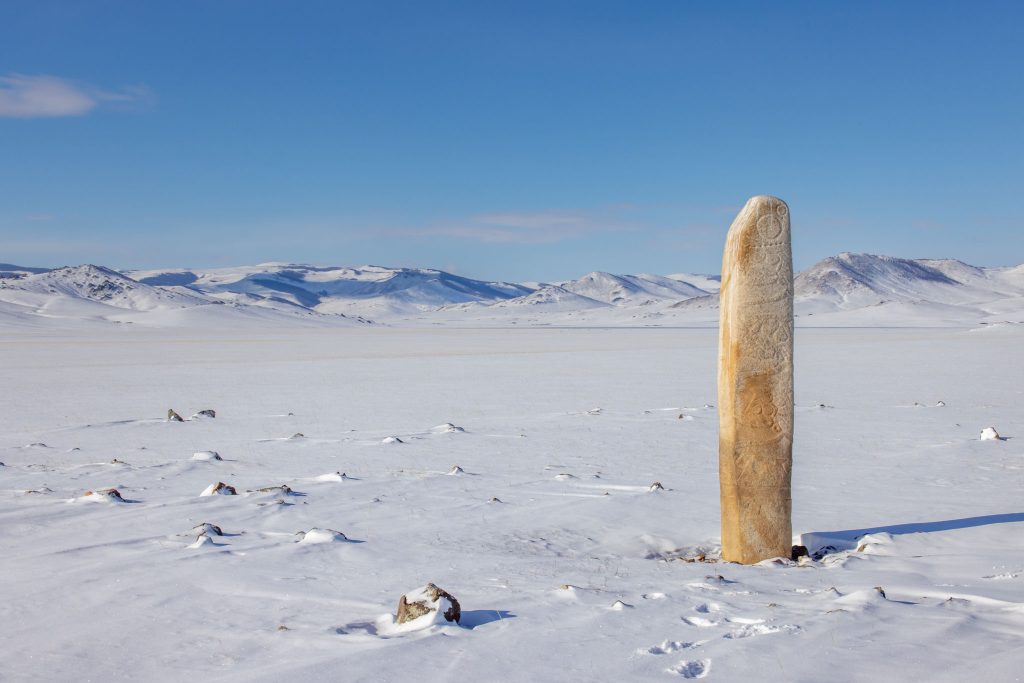
There are many deer stones in the Khoid Tamir valley. You cannot miss them as they are clearly visible in the landscape. These Deer Stones deserve to be a UNESCO World Heritage Site. They are beautifully carved thousands of years ago. Amazing colors and figures, I had several wow moments there. I do not regret going there in winter as it made this visit to the middle of nowhere very special.
There are also various burial mounds that surround the Deer Stones. Up the mountain, there is some rock art as well but as this would be covered in snow I did not even try to find it. After two or three hours exploring the area, it was time to leave and go back.
Mongolia
The old brown coal mine
On the way back there is an old brown coal mine. I thought let’s check it out and make some photos. When I saw a rabbit I wanted to get closer for a better photo but didn’t see a big nail hidden under the snow. It punctured my shoe and foot. Luckily in the end it was a clean cut and healed in a few days. For such events I am happy that I have all my vaccinations, like tetanus, up to date. The last thing I want is the need to find it in the middle of nowhere. I always carry a small med kit on day trips as well. It saved the day.
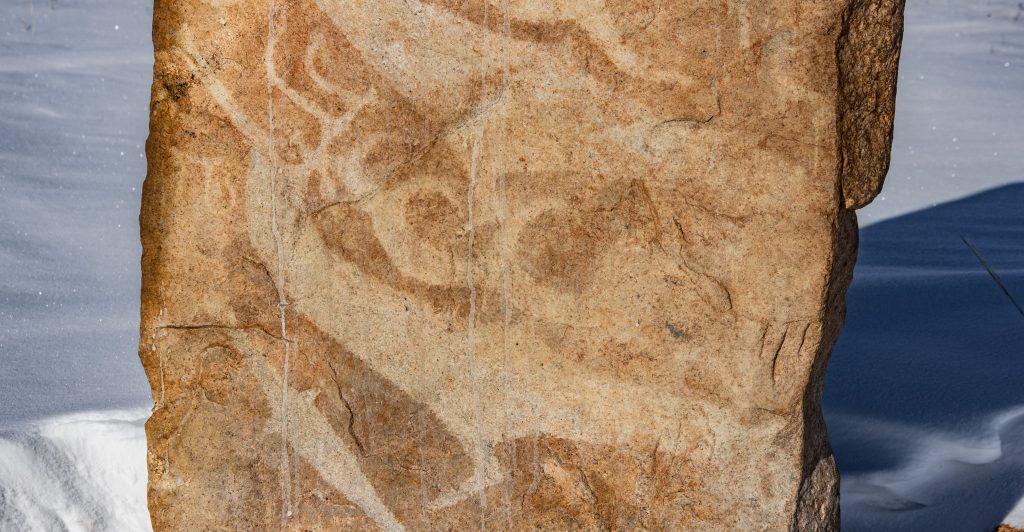
The drive back was straightforward and around 7 PM I was back at the Ashid Bekhi hotel. Had the same dinner as the day before and enjoyed some beers in the evening. Mission accomplished and a very long drive back ahead for the next day.
Mongolia itinerary day 4: Back to Ulaanbaatar
The day would be long so I departed Tsetserleg around 9 AM. Leaving much earlier would have meant driving in the dark which isn’t advisable. The road between Tsetserleg and Karakorum was a lot worse than it was two days ago. The fresh snow made parts of the road like an ice-skating track. It was a long drive to Karakorum where I saw that the tracks to Khar Balgas Ordu Baliq were covered in snow. It would have been impossible to visit, so if you visit in winter, visit places immediately when you see it’s possible. In Karakorum, I stopped at the Erdene Zuu monastery which can always be visited year round.
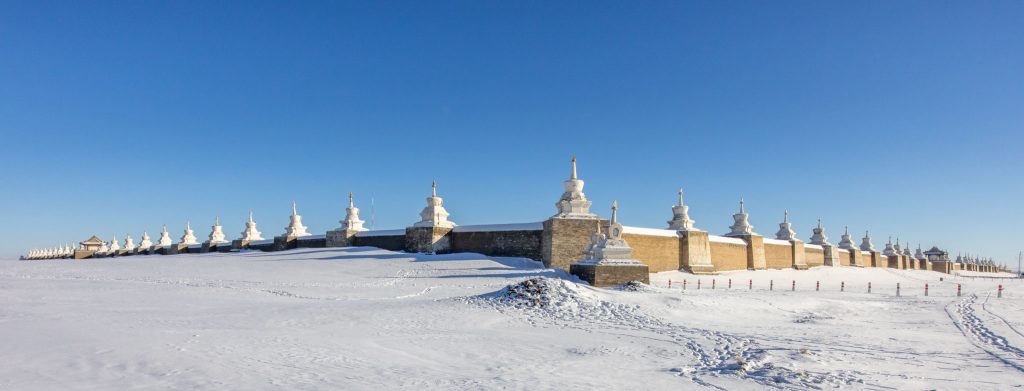
Erdene Zuu history
Erdene Zuu Monastery, founded in 1585, stands as one of Mongolia’s oldest and most significant monastic complexes. Constructed on the ruins of Karakorum, the former capital of the Mongol Empire, it served as a spiritual and cultural center. Under the patronage of Altan Khan, Erdene Zuu played a crucial role in the revival of Tibetan Buddhism in Mongolia. Despite periods of decline and suppression under communist rule, it remains a symbol of Mongolia’s religious heritage and a key attraction for pilgrims.
The iconic view outside from the wall and pagodas in the snow is mesmerizing. Inside the walls, I kept my visit short as temperatures dropped to minus 29 Celsius (about minus 20 Fahrenheit). Luckily I was just in time to witness a short ceremony of the monks. After warming up inside the temple, I continued my way back to Ulaanbaatar. The road was without snow.

Mongolia itinerary day 5: Flight to Beijing
The final day I had an early breakfast at the Blue Sky Hotel and headed to the airport. I did not fly back to Frankfurt but continued to Beijing for a congress. From there I continued to Jeju Island, South Korea and a few other places which I’ll cover in another article.
I really enjoyed my long-planned visit to Mongolia. The timing was risky but in the end it was a great experience. Karakorum and the Erdene Zuu Monastery were great, but the real highlight was the Deer Stones. They have amazing carvings, and the setting in the snow with nobody around made the visit magical. Would I return in summer? To Mongolia, yes, but not to these Deer Stones. I would choose another location then. If you are into an adventure, go to Mongolia in winter but plan wisely! I’m sure you will enjoy it.
Stay tuned for more stories and subscribe to the newsletter or follow CTB on social media (Facebook, Twitter, Instagram including Instagram stories; on all social media you can find CTB @christravelblog) to get updated information.
Did you visit Mongolia too or do you have questions? Please leave a comment at the bottom of the page. Love to hear from you!
Gallery
Click an image for a full screen gallery of more photos taken during this trip. If you like to use any photo for commercial, private or editorial use please contact first for permission and/or pricing.
